SMART PROPTECH THAT WON’T BREAK THE BANK
DECARBONIZING SMEs
SPECIAL FOCUS ON STRESS AND THE WORKPLACE

SMART PROPTECH THAT WON’T BREAK THE BANK
DECARBONIZING SMEs
SPECIAL FOCUS ON STRESS AND THE WORKPLACE

Zetlin & De Chiara LLP, one of the country’s leading law frms, has built a reputation on counseling clients through complex issues. Whether negotiating a contract, resolving a dispute, or providing guidance to navigate the construction process, Zetlin & De Chiara is recognized as a “go-to frm for construction.”


We’ve done hard things before, we do them all the time.
For most cancer patients, the usual options are surgery, chemotherapy, or radiation. So we’re working on ways to get the immune system to deploy billions of cancer-killing cells and help more patients survive.

When some people experienced mysterious COVID symptoms and had nowhere to go, our team created the first Center for Post-COVID Care.
It wasn’t that long ago we had to open up your whole chest for heart surgery. Now we’re pioneering a bypass that goes through a few tiny incisions. With this surgery, we can get you back on your feet in weeks instead of months.
So if anyone ever tells you there’s no other way—don’t listen.
We didn’t listen.
From coworking memberships to turnkey o ces, WeWork gives you more flexibility with your workspace. Discover solutions that make hybrid work for you.

Meridian’s national dominance in multifamily financing gives us a unique vantage point from which to approach markets on our clients’ behalf. By leveraging our 30+ year relationships and depth of experience, we are able to see what others can’t and produce exceptional outcomes — especially in turbulent markets. Remain informed and be agile with Meridian.



TODAY’S MARKETS MOVE MORE QUICKLY THAN EVER.





































President & CEO
Jeff Mann
editorial Editor
Debra Hazel
Associate Editors
Alexandra Baumbusch
Laurie Melchionne
Copy Editor
Geraldine Melchionne
Director of Communications and Marketing
Penelope Herrera
Director of Newsletter
Division
Cheri Phillips
Director of Special Events
Mirusha Damiani
art
Art Director
Krystal Peguero
Graphic Designer
Serena Bhullar
Ran Jing
Cover Photography
Ed Lederman
contributors
Sean Burke
Frank DeLucia
Elaine Haney
Sabhya Katia
Merilee Kern
Kris Kiser
Steven Kratchman
Ira Meister
Myles Mellor
Marcus Moufarrige
Peter Provost
Robin Rivaton
Carol A. Sigmond
Kyle Spencer
Brian Zrimsek
business
Technology Consultant
Joshua Fried
Distribution

Mitchell’s Delivery Service
digital media
Editors
Alexandra Baumbusch
Debra Hazel
Penelope Herrera
Laurie Melchionne
Cheri Phillips
Web Developer
CS DesignWorks
East Coast Office 450 7th Ave., Suite 2306 New York, NY 10123 212-840-MANN (6266)
West Coast Ofice 110 E. 9th Street CMC, Suite A1169 Los Angeles, CA 90079 866-306-MANN (6266)
The opinions expressed by our columnists are not refective of the views and opinions of the publisher or editorial staff of Mann Report. Publication of such views and opinions does not constitute endorsement by Mann Report. Any reproduction, including but not limited to internet usage, is prohibited without the express written permission of the publisher. mannpublications.com

In the real estate business, especially the New York real estate business, we see a lot of legacy companies, with the third or sometimes even the fourth generation of a family running the firm and continuing a legacy of excellence. The Dermot Company, on the other hand, is in its fourth decade, and after being acquired by its current leadership, is growing rapidly here and in Florida.
I was excited to learn more about how Dermot’s leaders are continuing to take the company forward by focusing on their people: treating them with respect, o ering them opportunities to grow and remembering that real estate is a team sport.
Speaking of sports, there’s still time to sign up for the National

Realty Club Foundation’s annual Golf Outing, being held on October 2 at the Fresh Meadow Country Club and honoring Michael Kerr and Zach Kerr, chairman and president, respectively, of M&R Management Co.

I’m grateful to our co-chair and my dear friend Robert Romano of Absolute Electric and our Golf Committee for organizing what will be a fun day of golf and a spectacular cocktail hour and dinner after. The National Realty Club Foundation was founded to help support organizations that are supporting New York City and New Yorkers, and I’m excited to see how it has grown in the past couple of years.
See you next month!
”There are many roads to success, but only one sure road to failure; and that is to try to please everyone else.
– Benjamin Franklin







































































Rainier

Segment Leader Sr. Managing Director O ce: 212.661.0790
Cell: 908.720.4223 rguanlao@websterbank.com
Anna FusGorniak Managing Director, Relationship Manager O ce: 212.661.0236

Cell: 917.231.6758 afusgorniak@websterbank.com
John Kowalski Managing Director, Relationship Manager O ce: 212.661.2307


Cell: 646.629.9586
jkowalski@websterbank.com

Mark Reid Managing Director, Relationship Manager O ce: 215.900.1874 mreid@websterbank.com


Trevor Hintzen Director, Relationship Manager O ce: 212.661.0739 Cell: 917.727.5272 thintzen@websterbank.com
Robert Mallimo Director, Relationship Manager O ce: 212.661.0943 Cell: 631.620.4444 rmallimo@websterbank.com


Welcome to our annual Proptech issue, where we focus on some of the newest technologies and ways to use them to improve entrances and exits, decarbonize our propertes, integrate AI and more.
But even as we focus on the technical, we’re also shining a light on the very human needs surrounding the real estate industry. The last few years have been a challenge, at best, and it’s way past tme to discuss their efect on the mental health of all in the business. Thanks to Brian Zrimsek for his piece on the importance of alleviatng stress for property managers, Merilee Kern for her observatons on listening and for Sebasten de Ghellinck, Brendan Lofus and Elizabeth Crowley for speaking with me about their work to reduce the number of suicides taking place among constructon professionals.
Proptech can help real estate builders, agents, developers and consultants do their jobs beter, more efciently and more afordably. But it can’t replace interpersonal interacton or tell another human being going through a tough tme that he or she isn’t alone.
September is Natonal Suicide Preventon Month. Whether you need help or want to give it, reach out.



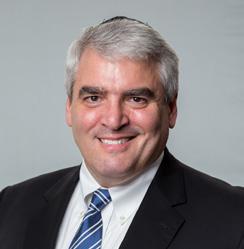

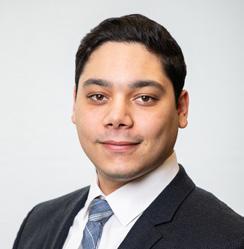

The 26th Annual Breath of Life New York Golf Tournament took place at Old Oaks Country Club in Purchase, New York, where more than 100 friends gathered to enjoy a day of golf benefting National Jewish Health, a leading respiratory hospital.


Roger Silverstein, executive vice president of Silverstein Properties Inc., is a National Jewish Health trustee and the tournament’s new chair. Chairs Emeriti of the event included Bob Helpern of Tannenbaum Helpern Syracuse & Hirschtritt LLP,

“Bob, Sandy and Steve have built this into a superb event,” said Silverstein. “I also give a special thanks to Nancy and James Berry Hill
and Marjorie and Stephen Raphael who founded it.”
Tournament sponsors included: CBRE Inc., Greenberg Traurig, Abby and Andrew May, Marjorie and Stephen Raphael, Silverstein Properties Inc., Wilk
PHOTOS BY ON THE SPOT PHOTOS Sandy Lewis of SBL Property Consultants LLC and Steve Siegel of CBRE.Auslander LLP, Marsha and Richard Goldberg, Jacqueline and Bob Helpern, Kambos Realty Corp., Sheila and Sandy Lewis, Diane and Darryl Mallah, Red Apple Group, Empire Automotive Group, Ornella and Robert Morrow, Harriet
and Eric Rothfeld, Jill and Sandy Sirulnick, Systems 2000 Plumbing, Sheryl and Arnie Winick, Ambassador Construction Company Inc., Felice and Jay Seeman, Joanne and Jeff Liebenstein, Kanaris Contracting and Shelley and Jeffrey Parker.
1. Roger Silverstein, Sandy Lewis, Bob Helpern and Marc Steron

2. Doug Donaldson, Roger Silverstein and Joe Scharf

3. Barry Horowitz, John Khani, Sandy Lewis and Gerald Yellin
4. Richard Adelman, Bob Helpern and Marc Steron
5. Bryan Rubin, Michael Helpern and Adam Haber
6. Joe Artusa, Lou D’Avanzo, Christine Colley and Kyle Young
7. Andrew Kaskel, Adam Lewis, Zach Winick and Andrew Schwartz
8. Elise Udolf, Audrey Horowitz, Nancy Gilbert and Sheila Lewis

9. Andrew Goldberg, David Maurer-Hollaender, Steve Siegel and Brett Shannon




The CoreNet Global New York City Chapter (CoreNet NYC) hosted its highly anticipated Annual Golf Outing at the prestigious Century Country Club and Old Oaks Country Club in Purchase, New York. The event brought together key industry leaders, executives and professionals for a day of networking, friendly competition and collaboration in a picturesque setting. The outing surpassed all expectations, cementing its reputation as a premier event in the commercial real estate community.
The CoreNet NYC Annual Golf Outing served as a platform for participants to connect, foster new relationships and exchange valuable insights in an informal and relaxed environment. The event attracted a diverse group of attendees, including corporate real estate executives,
service providers, developers, brokers and professionals from various sectors of the industry. The highly anticipated event was attended by over 300 leading professionals in the real estate and construction industry as well as CoreNet NYC members and leadership, making it one of the largest industry golf outings.
“The CoreNet NYC Annual Golf Outing continues to be a fantastic occasion for golf enthusiasts and professionals to connect,” said Alyson Blewett, president at Alyson Blewett Corporate Consulting LLC and Annual Golf Outing Committee co-chair, CoreNet NYC. “It brings us immense joy to organize and witness the event's overwhelming success. We extend our appreciation to all the participants for their unwavering support.”
Christian Bryan, Larry Charlip, CoreNet Guest and Tommy O Halloran








 Christine Chaves and Alison Eagle
CoreNet Guest, Debra Cole, Linda Foggie and CoreNet Guest
CoreNet Guest, Morgan Gorospe and Cesar Robles
Dale Schalather, CoreNet Guest and Linda Foggie
Dan Johnson, Cesar Robles and Rose Arias
Elizabeth Beyer and Ariel Zurad
Elyse Santic, Michele Mann and CoreNet Guests
Jamie Fuertes, Lou D'Avanzo and James Love
Paul Darrah, Gina Rizzo and Dale Schlather
Christine Chaves and Alison Eagle
CoreNet Guest, Debra Cole, Linda Foggie and CoreNet Guest
CoreNet Guest, Morgan Gorospe and Cesar Robles
Dale Schalather, CoreNet Guest and Linda Foggie
Dan Johnson, Cesar Robles and Rose Arias
Elizabeth Beyer and Ariel Zurad
Elyse Santic, Michele Mann and CoreNet Guests
Jamie Fuertes, Lou D'Avanzo and James Love
Paul Darrah, Gina Rizzo and Dale Schlather







Financial technology and management consultancy Capco has signed a lease for a 26,620-square-foot, full-foor space at the Empire State Building (ESB) on the 68th foor, announced building owner Empire State Realty Trust (ESRT).

ESB features than 65,000 square
Supermarket fans, the wait is almost over. Wegmans will make its previously announced Manhattan debut at 770 Broadway on October 18.
The 87,500-square-foot store replaces the Astor Place Kmart (the Wanamaker Building). The Astor Place store will be the second in

feet of amenities that include a tenant-only ftness center.
Jared Horowitz and Jason Perla of Newmark represented Capco in the negotiations, and Shanae Ursini and Jordan Berger of ESRT and Scott Klau and Neil Rubin of Newmark represented the property owner.
New York City.
An extensive restaurant foods selection will be prepared by Executive Chef David Lopatynski and his culinary staff. The onsite dining room, featuring a Sushi Bar and Champagne-Oyster Bar at Astor Place, will open in the frst half of 2024.
PUBLIC STORAGE TO ACQUIRE SIMPLY SELF STORAGE FOR $2.2B
Public Storage has agreed to acquire Simply Self Storage from Blackstone Real Estate Income Trust Inc for $2.2 billion. The acquisition is expected to close in the third quarter of 2023.
The portfolio comprises 127 wholly owned properties and nine million net rentable square feet located across
18 states in markets with high population growth. Approximately 65% of the properties are in Sunbelt markets. Public Storage will integrate 25 more properties into its third-party management platform.
Eastdil Secured served as fnancial advisor to Public Storage, and Wachtell,
Lipton, Rosen & Katz and Hogan
Lovells US LLP acted as legal advisors. Wells Fargo and Newmark Group, Inc. served as lead fnancial advisors to BREIT, and BMO Capital Markets and Sumitomo Mitsui Banking Corporation
(SMBC) also served as fnancial advisors. Simpson Thacher & Bartlett LLP acted as BREIT’s legal advisor.






















George Comfort & Sons, on behalf of the 44 Wall St. ownership, has signed lease agreements totaling 18,600 square feet with both existing and new tenants at the boutique Downtown Manhattan tower.

Cities for Financial Empowerment Fund has signed a 10-year lease for
12,000 square feet on the 10th foor. It is relocating within the building from its current 5,600 square feet. Street Smarts VR, formerly a subtenant, is moving to 3,300 square feet on the seventh foor. Also on the seventh foor, new tenant GovExec fnalized a deal for 3,300 square feet, relocating from 61 Broadway.
Multifamily investment management and development frm Cityview has completed Jasper, a 296-unit opportunity zone project adjacent to the University of Southern California.

The highly amenitized, mixed-use community is now open for leasing and offers a variety of studio,
one and two-bedroom foor plans, including 25 units designated very low affordable and three designated moderate income affordable.
Located at 2528 South Grand Ave., Jasper is situated at the nexus of Downtown Los Angeles and University Park East.
Fast casual Mexican restaurant
Qdoba announced plans to double in size over the next decade, opening 40 stores this year, followed by 60 in 2024 and 80-plus annually beginning in 2025. The company currently has 750 restaurants in 45 states.

Qdoba sold 77 company-owned
restaurants to existing franchisee, North Fork Fresh Mex, which now operates 97 Qdoba restaurants in Missouri, Illinois, Indiana, Kentucky and Virginia. North Fork has also committed to build 73 new restaurants over the next seven years. Qdoba is currently 80% franchised with 85 franchise partners in the U.S.

Housing affordability in California during the second quarter of 2023 slid to the lowest level in nearly 16 years as interest rates stayed above 6% for the third straight quarter and home prices remained elevated by a shortage of homes on the market, reported the California Association of Realtors (CAR).

Fewer than one in fve (16%) home buyers could afford to purchase a median-priced, existing single-family home in California in second-quarter 2023, down from 19% in the frst quarter of 2023 and down from 17% in the second quarter of 2022, according to CAR’s Traditional Housing Affordability Index (HAI).
One-stop-shop real estate brokerage Houwzer announces the creation of its parent company, Newfound, which will leverage Houwzer and Trelora’s national network of salaried agents and its full-service, 1% listing model that it said has saved thousands of customers hundreds of millions in commissions.

The company is launching a suite of product lines designed to address the needs of a rapidly evolving real estate market. Among Newfound's introductions are HomeRise, a national, 'fat-fee DIY' listing platform and Dash, a transaction management platform that streamlines transactions for all parties.
The Loren Group, a hotel and residences brand, offcially broke ground
The Loren at Turtle Cove, continuing its international expansion in Turks & Caicos. The location is situated in a private cove on Grace Bay, a refection of the brand's growing demand for residences and hotel projects with naturally inspiring surroundings.


Berkshire Hathaway HomeServices (BHHS) EWM Realty has been appointed the exclusive sales team of 7918 West Dr. in Miami’s North Bay Village, developed by Malaysia-based Pacifc & Orient Properties LLC. Mirna Zarate, Zenaida Figueroa and Gasper Mavric are the exclusive sales agents.
The 21-story condominium, which broke ground in February and is slated for completion in the frst half of 2025, comprises 54 generously sized residences on the Intracoastal Waterway, marked by unobstructed vistas of Biscayne Bay and the surrounding city. Pricing currently starts at $2.2 million.

Following recent expansions in Italy, Greece, Portugal and Mexico, luxury brokerage Nest Seekers International has expanded to Spain with an offce in Mallorca. The new Spanish hub will broaden its reach to include some of the region's most desired destinations, including Menorca, Ibiza and Formentera.

Nest Seekers’ expansion into the Spanish market is driven by the surge in American interest in the country's real estate. Fueled by the strength of the dollar, increased direct fights and beautiful properties, American sales have soared with growing interest in Andalusia, including Marbella, Málaga and Seville.
The Westchester County Industrial Development Agency (IDA) voted fnal and preliminary approvals of fnancial incentives for two residential developments in White Plains — Armory Plaza and Modera White Plains. The two projects together represent a total private investment of $121.5 million.
The IDA voted fnal approval of fnancial incentives for a $32.3 million renovation of Armory Plaza. Project developer The Related Companies is seeking to redevelop the 52-unit senior apartment complex which is located 35 South Broadway. Built in 1909, the four-story castle-like property is 100% affordable.




Leap Analytics Inc., a fntech real estate investment frm, has launched educational training sessions for commercial realtors on how to utilize Home Equity Agreements (HEAs) to activate capital locked in commercial real estate investments.
Leap now provides online, on-de-
mand and in-person training for commercial agents on how small business owners and homeowners can leverage the equity in their existing properties for growth. It will educate and train commercial agents on its Leap Revive product, an HEA designed to support the capital needs of small businesses.

HOME FRANCHISE CONCEPTS INTRODUCES LIGHTSPEED RESTORATION
Home Franchise Concepts, a platform of franchise brands in the home services sector, is launching Lightspeed Renovation, the latest entrant in the $210 billion restoration market. Lightspeed Restoration provides 24/7 service from highly trained technicians to address water and fre damage restoration as well
as indoor air quality (IAQ) improvements for residential and commercial properties.
Lightspeed Restoration is making its debut in Lexington, Kentucky, Mobile, Alabama and Covington, Louisiana. Plans call for rapid expansion, with territories available across the U.S.

NYCHA, NYSERDA AND NYPA TEAM FOR THE INDUCTION STOVE CHALLENGE
The New York City Housing Authority (NYCHA) — with the New York State Energy Research and Development Authority (NYSERDA) and the New York Power Authority (NYPA) — signed an agreement for the Induction Stove Challenge. The program, expected to launch this fall, will be supported by NYSERDA and NYCHA as a competi-
tive challenge that calls on appliance manufacturers to design and produce energy-effcient, electric cooking systems to replace existing fossil fuel stoves while avoiding costly electrical upgrades in NYCHA buildings.
NYCHA, NYSERDA and NYPA will establish performance criteria and
product specifcations for the stoves. NYPA is expected to issue a Request for Proposal (RFP) later this year to select one or more manufacturers and will support the design and testing of the new stoves. Once proposals are selected for awards, NYSERDA will support the purchase, installation and testing of 100 stoves as a pilot.

Fitwel announced the latest cohort of companies to join its global community of Champions, Providers and Partners.
MetLife Investment Management, Manulife Investment Management and The Green Cities Company have signed on as dedicated Fitwel
Champions. Joining current Fitwel Providers Brightworks Sustainability, and JLL, among others, are CD Sonter Ltd., BranchPattern and Sustainable Investment Group.
HXE Partners (a Morrow Sodali Company) and Trane Technologies renewed commitments as Partners.

Turnbridge Equities (Turnbridge) and affliates of Dune Real Estate Partners LP (Dune) announced that their Bronx Logistics Center project has received a formal Precertifcation Letter from the U.S. Green Building Council (USGBC) designating the project with a LEED v4 Platinum rating, the highest LEED certifcation
currently available.
The designation makes Bronx Logistics Center the East Coast’s frst distribution warehouse with a LEED Platinum rating, with only nine other distribution buildings throughout the entire United States achieving the USGBC’s highest rating.
Erlanger Health Inc. has partnered with Realty Trust Group (RTG), a full-service healthcare real estate advisory and services frm, to manage its 1.6-million-square-foot real estate portfolio.
Based in Chattanooga, Tennessee, Erlanger is a six-hospital system that
treats more than 600,000 people annually, with facilities spanning East Tennessee, North Georgia and Western North Carolina.
Erlanger selected RTG to provide comprehensive real estate portfolio management, including property management, strategic planning support, lease
administration, fnancial management and maintenance support services.
With the addition of Erlanger, RTG has expanded its portfolio management platform to nine health system client relationships, totaling over 19 million square feet of healthcare facilities managed.











JLL has launched JLL GPT, the frst large language model purpose-built for the commercial real estate (CRE) industry. Developed by JLL Technologies (JLLT), the technology division of JLL, the bespoke generative artifcial intelligence (AI) model will be used by JLL's 103,000-plus workforce to provide CRE insights to clients in
RentSpree, a rental management software provider, has partnered with OneKey MLS, the largest multiple listing service in New York, to bring its services to the organization’s more than 50,000 members.

RentSpree’s full integration on the OneKey MLS platform will facilitate
a whole new way. JLL's extensive in-house data will be supplemented with external CRE sources, and the company plans to offer made-to-order solutions to clients later this year.
JLL GPT allows the company to extend its technology strategy into the generative AI era.

the instant creation of an ApplyLink for rental listings, which supports members in generating more leads, cutting down transaction time and increasing returns. The new integration makes it easy by allowing OneKey members to command the entire rental process easily and effciently.

Zillow Group's new-construction listings will soon be automatically syndicated to Redfn, connecting home builders with motivated buyers on both platforms. The strategic partnership will dramatically expand the reach of home builder listings on Zillow and allow Redfn customers to explore a broader range of new-con-
struction homes for sale.
Home builders will also market their new-construction communities to Redfn’s customer base of 50 million monthly visitors. Builders partnering with Zillow will begin to see their listings and communities syndicated to Redfn in the fourth quarter of 2023.



Mount Sinai New York–Concierge Care is a membershipbased medical practice that has brought the worldrenowned care of the Mount Sinai Health System in New York City, here to you in The Palm Beaches.

Our new concierge program o ers an outstanding patient experience and access around the clock. Our members receive comprehensive primary care, cardiac and dermatology assessments, and nutritional counseling, as well as amenities you would not find in a typical medical practice, such as home visits, urgent care, coordination of specialist care, travel medicine, and much more. Members will also have access to Mount Sinai’s Hudson Yards concierge practice in New York.
Most importantly, you gain access to the full resources of the Mount Sinai Health System, for all of your health care needs. This is the health care experience you have been looking for.
Learn more at mountsinaiconciergecare.org
To inquire about membership, please call 561-328-7112.
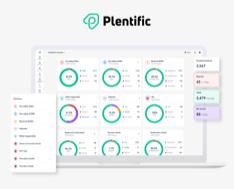
Plentifc, the fully integrated, real-time property operations platform for multifamily property repairs, has added a comprehensive Compliance Management Solution.

The Compliance Management Solution is customizable to help property management teams securely track
all local, state and federal requirements in a single platform. Designed to reduce the risk of citations, litigation violations and fnes while ensuring resident safety, the system encompasses all inspections, license renewals, renovation and rehab projects and administrative requirements in an online system.

Restb.ai, a provider of artifcial intelligence (AI) and computer vision solutions for the real estate industry, announced a strategic partnership with Bradford Technologies, a provider of solutions for valuation professionals. Restb.ai's advanced computer vision and machine learning technology will be integrated into
Bradford Technologies' report quality control processes.
Integrating Restb.ai's AI technology with Bradford's solutions aims to automate and bolster quality control processes, including detecting image issues such as out-of-focus images and other problematic content.
PLUNK UNVEILS AI - POWERED HOME ANALYSIS FOR REAL ESTATE INVESTORS
Artifcial intelligence (AI)-powered home analytics platform Plunk has launched Plunk Pro for real estate investors, advisors and analysts. Plunk tracks over 104 million homes nationwide to give users the comprehensive home valuation data in real time, in addition to predictive home investment analysis and risk assessment.
Designed for individual users and small teams, Plunk Pro provides real-time access to: Plunk Home Value, a proprietary, dynamic valuation model, updated in real time; Plunk Refned Value, a user-generated valuation; Home Compare, which evaluates how a home compares to others in the neighborhood; Plunk Remodel Val-
ue, the future fully remodeled value of a home; market insights including real-time market access to data including median days on market, price per square foot and more and project recommendations on improvements.
Plunk’s home analytics are also available for enterprise customers via API.
HUDSON
Counsel to Related Companies and Oxford Properties Group in connection with the development of and all leasing activities at the 26-acre Hudson Yards on the West Side, the largest private development in Manhattan since Rockefeller Center.
Counsel to Google in connection with its US$2.4 billion acquisition of Chelsea Market in New York City.
Counsel to BlackRock in its 850,000square-foot lease for its planned headquarters relocation to 50 Hudson Yards.
Counsel to Brookfield Property Partners on all aspects of the development of Manhattan West in the Hudson Yards District, including its recent lease to the National Hockey League.
Counsel to Vornado Realty Trust and Related Companies on the redevelopment of Penn Station, including the redevelopment of the James A. Farley building and construction of Moynihan Train Hall.
Counsel to J.P. Morgan, as lead lender, in its US$900 million construction loan syndication to Extell Development for the development of Central Park Tower.
Counsel to SL Green Realty Corp., including all zoning approvals, in connection with the development and leasing of One Vanderbilt Avenue, an iconic 1,401-foot tall, 1.7 million square foot office tower being constructed on the full block to the west of Grand Central Terminal.

Counsel to Maefield Development in its approximately US$1.5 billion acquisition of the EDITION hotel, retail, and signage project known as 20 Times Square.
Counsel to JP Morgan Chase in connection with various aspects of its planned 2.5-million-square-foot headquarters redevelopment at its 270 Park Avenue location.
“An extremely talented real estate group with an impressively deep bench: the team is ideal for handling the most complex matters.”
— Chambers USA
Arc'teryx, a Canadian outdoor apparel and equipment chain, has opened a new location at The Gate at Manhasset in Manhasset, New York. The Arc’teryx store occupies a 3,900-square-foot space.
The new store at The Gate represents the company’s ffth retail
location in New York state, as the brand continues to expand globally.
Positioned at the focal point of Manhasset’s Miracle Mile, The Gate at Manhasset is located just 1.5 miles north of Interstate 495, near the corner of Northern Boulevard and Searingtown Road.

Green Street, a provider of actionable commercial real estate intelligence and analytics, has partnered with Snowfake to engage with its Data Cloud to deliver real-time U.S. and pan-European commercial real estate intelligence in an easily accessible format.
“Green Street is committed to deliver-
ing seamlessly connected commercial real estate data, analytics, research and news on both the public and private real estate markets in various formats,” said John Guilfoy, chief product offcer for Green Street. “This collaboration gives clients yet another means to easily extract extensive time series data and predictive analytics –
such as cap rates, market grades, and forecasts — and seamlessly integrate them into their own company models, internal systems and daily workfows.”
Some key Snowfake capabilities include real-time updates and integrations with BI/dashboarding tools, internal databases and more.
MRA Group, a privately held real estate development and client services frm, has secured $63 million in additional debt for the ongoing redevelopment of Chestnut Run Innovation & Science Park (CRISP), the 164-acre, 14-building applied sciences hub in Northern Delaware. Fulton Bank in conjunction with Nu-

veen Green Capital through C-Pace fnanced $50 million, while the remaining $13 million was provided by WSFS Bank.
The utilization of C-Pace fnancing via Nuveen is a frst for MRA, which will use the funds for the continued redevelopment efforts at CRISP.
Understanding tax planning can be a taxing experience. It requires a dynamic knowledge of everchanging codes and regulations, plus a deep understanding of your individual needs and goals.
That’s where Janover comes in. We get to know both you AND your business. We then leverage our knowledge of the system to tailor a detailed tax plan that is unique to your specific needs.

At Janover, our greatest value is the ability to help you look at the whole picture - numbers, family, business. You’ve worked hard to have it all... wouldn’t you like to keep it?

Newmark Group Inc. has expanded its Capital Markets services with the launch of the Data Center and Digital Infrastructure practice group, further expanding its expertise in alternative assets. Newmark has hired Brent Mayo as executive managing director to anchor the practice group.
Mayo, based in Newmark's New York City headquarters, specializes in capital formation, fnancings, asset sales and platform advisory. He will work with Newmark’s Capital Markets advisors on capital formation, fnancing and asset and portfolio sales and alongside the frm’s Data Center Consulting Group advisors.
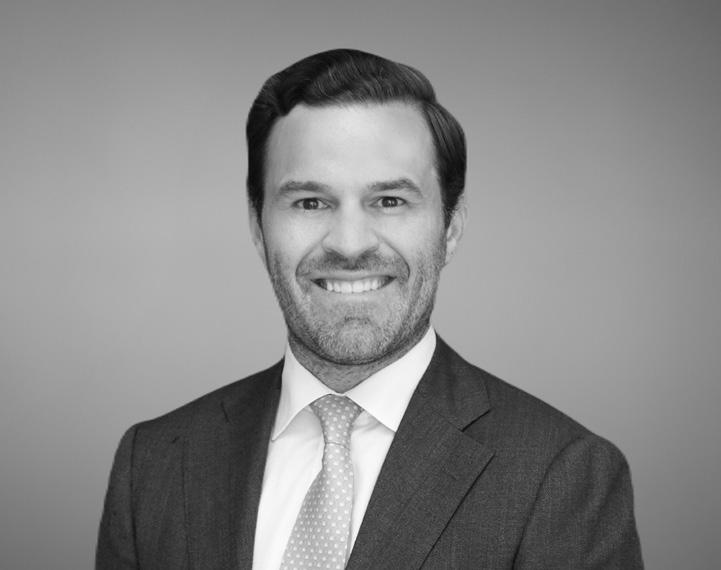
OneKey® MLS is the one source real estate marketplace for monthly statistics for residential real estate transactions from Montauk to Manhattan, north through the Hudson Valley and the Catskill Mountains.
The Greater New York region saw the number of residential sales

Curbio, the pre-sale contractor solution for realtors and their listing clients, announced its expansion into Sarasota, Florida. With this expansion, Curbio will begin helping Sarasota-area real estate agents and their clients get all their listings ready for market reliably and sold for top dollar amid an increasingly

slow, but prices rise in July, according to OneKey MLS. The New York regional closed median sale price of $633,000, was a 3.40% increase compared to June 2023. Year-overyear, the closed median sale price rose slightly as well, increasing 2.10% from the $620,000 reported in July 2022.
competitive housing market.
Curbio partners with real estate agents to complete pre-listing home improvements. Curbio works with agents to determine what updates will generate the highest ROI for sellers, and then acts as the licensed and insured contractor.
We get down to banking, so you can get down to business. Commerical Banking with TD Bank.
We may be one of the 10 largest banks in the U.S., but we never lose sight of the individual. Our Relationship Managers personally get to know your business, taking the time to understand your unique needs before o ering their custom solutions. And with over 150 years of industry experience, you won’t just like working with us. You’ll love it.
tdbank.com/commercialbanking





Bonnie Heatzig is the Director of Luxury Sales for Douglas Elliman and rated nationally as the top 1% of real estate agents nationwide with over 1 Billion Dollars in sales. She ranks among the most elite agents in South Florida thanks to her unparalleled knowledge of the ultra-luxury real estate market, especially in Boca Raton.


What truly sets Bonnie apart is the fact that she is a licensed attorney, making her able to navigate even the most complex contracts with ease and finesse. Bonnie approaches every deal with a deep sense of empathy and a genuine desire to help her clients Her ability to build strong and lasting relationships is a testament to her exceptional interpersonal skills and her unwavering commitment to providing the most personalized, ultra-exclusive services





For over 30 years, The Dermot Company, a vertically integrated multifamily investor and operator, has grown to become a market leader, with a portfolio that includes over 6,000 apartments on the East Coast, from New York to Florida. With o ces in New York City and West Palm Beach,
Florida, Dermot owns and/or operates 21 luxury communities across New York City and Florida.
But what truly sets Dermot apart, the company said, is its “people-first” perspective that guides its company culture, investment portfolio, property management and commitment

to residents and dedication to excellence in every aspect of the business. The factors guiding the business, said CEO Stephen Benjamin, are investment standards, resiliency and sustainability.
“It is critical that we treat every dollar in our possession as our own,” said Benjamin.
“We take nothing more seriously than being a good steward of our investors’ capital as we identify opportunities to outperform the market and deliver superior investment returns for them.”
The company was founded outside San Diego, California in 1991 by William Dickey,
and named for Dickey’s father, Dermot. When Dickey and his wife moved back to their native New York a decade later, so did the company. Dickey sold the company to Benjamin and his two partners, Andrew Levison and Drew Spitler, in 2015 and is now happily retired. Meanwhile, Benjamin, Levison and Spitler, have built a leadership team to lead the company into the future.

“When we bought Dermot from Bill in 2015, it was just Steve, Drew and I and about 20 people across both the corporate o ce and the on-site teams,” recalled Levison, partner, chief operating o cer and managing director.
“We had five properties and assets under management (AUM) of approximately $1 billion. We had recently successfully sold o most of our portfolio as part of Bill’s retirement and
had shrunk to our smallest size in many years. From that base, we have grown the company over the past eight years to include nearly 100 people, 21 properties and AUM of about $4 billion. Our goal now is to double in size over the next five years.”
Levison, who joined Dermot in 2011, has played a pivotal role in transforming Dermot’s approach to acquisitions and asset management with a focus on acquiring and developing younger properties with a value-add component, as well as expanding its roster of investment partners. Dermot’s strength, he said, lies in a deep understanding of its specific submarkets.
“We look at everything that comes across our desk, but that doesn’t mean we’re interested in everything,” he
said, adding that the company’s belief that integrating ESG practices enhances resident experience and lowers operational costs for partners. “It has to be good for employees, good for residents and good for our investments simultaneously.”
A key di erentiator, said Luke Pierce, vice
president of investments, is Dermot’s thorough evaluation of potential investments, using a comprehensive approach that combines raw data and analytics on block-by-block geography, building condition, transportation accessibility and area demographics.
Another “lifer,” Partner and Managing Director Drew Spitler, joined the company following his 2002 graduation from the University of Arizona, and was integral to much of its development and investment activity in New York, even as he earned an MBA from New York University in 2008. In 2020, Spitler moved to South Florida to open Dermot’s o ce in West Palm Beach and expand the company’s
reach throughout the Southeast. Dermot has completed over $500 million in investments in both value-add acquisitions and the development market in Florida.
“We know we are ‘new’ to Florida and the Southeast and, despite our success to date, we still have a lot to learn. It’s essential to have
boots on the ground and actively manage our projects locally. We also believe that we bring a unique investment strategy and system informed by our experience in New York City, focusing on critical in-fill neighborhoods, high-quality assets and significant opportunity to add long-term value,” Spitler said.
The intense growth and transformation that is

occurring in Southeast Florida led Dermot to acquire three value-add properties, one each in Palm Beach, Broward and Dade Counties, including Seabourn Cove in Palm Beach County in late 2020. Located in a strong infill area adjacent to Delray Beach, Seabourn Cove’s townhome-style apartments met the renter demand for more space during the pandemic.

“Demographic trends, coupled with a strong pro-business environment in Florida, suggested that a dramatic spike in investment activity was forthcoming, so we acted early and eagerly,” said Spitler.
Dermot paused purchases in the
Southeast in 2022 as prices became too frothy and cap rates dipped below 3%. With the debt markets creating market uncertainty and pricing opportunities in late 2022, Dermot returned, recently acquring The Preserve at Deercreek, a 540-unit multifamily complex in Broward County.
“It’s important to not follow the herd. When the market heads in one direction, we don’t naturally follow. We ask why and then build our strategy around the void that is created,” Spitler said.
“There is an opportunity for us when property is for sale unrelated to the real estate fundamentals. We saw this as assets came to market due to redemption requests and/or a challenging
refinance market.”
The partners have invested heavily in building a high-quality, institutional platform with internal controls, processes and systems that would rival those of much larger money managers. Dermot has developed internal committees to vet and implement company changes that range from accounting procedures, hiring and software implementation to complex engineering feats such as installing a solar panel system on a parking garage roof at a Florida apartment complex.
As ESG (environmental, social and governance) considerations have gained prominence, Dermot
has been a leader in incorporating these factors into their business — at the Pension Real Estate Association’s (PREA) Spring 2023 conference, Dermot received the prestigious Emerging Manager ESG award.
Jane Cohen, who joined Dermot as an assistant property manager in 2010, and is now vice president of operations and leads the ESG program, stressed the importance of Dermot’s comprehensive approach to ESG, integrating it into every aspect of the company's operations rather than treating it as a checkbox.
To that end, Dermot has set forth a goal to reduce its portfolio’s emission load by 40%
THE SEABOURN IN BOYNTON BEACH, FLORIDA IS ONE OF FIVE MULTIFAMILY DEVELOPMENTS IN DERMOT’S GROWING SOUTH FLORIDA PORTFOLIO. (PHOTO BY LUXHUNTER PRODUCTIONS) GROUP PHOTO BY ED LEDERMANby 2030, implementing multiple initiatives within each of its buildings to achieve emissions reductions with the help of multiple partners.
“It’s not like you just install a more e cient boiler and everything's fine,” Benjamin said. “We have to attack the problem on all fronts to find winning solutions.”
Dermot also recognizes that it’s not only about what the company does.
“Our work includes resident responsibility, engaging residents for active management on their own utilities, because the residents are 60% or more of the usage,” Benjamin added.
Incorporating sustainable business practices is not only important for our collective future, but also good for his investors’ bottom line, Benjamin added.
“We are fortunate to have an amazing group of partners who have supported our work over the years because they see that we are committed to our mission and we are consistent.” Benjamin said. “Our primary focus is at the asset level. By building adaptability and sustainability into the company’s DNA, Dermot can seize opportunities that others miss, and navigate challenges with grace and e ciency. In an industry that is constantly facing new challenges, the ability to adapt, recover and thrive in the face of adversity is essential.”
Bringing older NYC properties up to ESG standards presents unique challenges. After acquiring 220 East 72nd St. from a prominent New York family who
had built and owned the asset for over 40 years, Dermot performed upgrades and renovations that increased rental rates and improved energy e ciency and resident comfort. By replacing single-pane windows with high-e ciency windows and transitioning from steam heating to more e cient electrical systems, Dermot reduced energy consumption and contributed to a statewide e ort to electrify heating systems. The company also uses its amenity club to engage with residents, providing information and educational programs on energy use, recycling and sustainability.
The Not-so-little Luxuries
The management platform has also been transformed as the needs of the renters in Dermot’s luxury buildings have evolved to prioritize amenities, said Alissa Hazan, director of portfolio operations and general counsel. These discerning residents appreciate the range of amenities o ered in Dermot properties, including gyms, children's rooms, rooftop spaces, screening rooms and even a golf simulator. Dermot’s programming, facilitated through its amenity club, helps residents form connections and build friendships through events.
At 250 East Houston, Dermot recently partnered with Decorazon Gallery to open a pop-up gallery and commissioned an intricate mural by Guillaume Cornet, where he immortalized five residents and their pets. At 101 West End, local band Fuey brought the house down on the building’s expansive rooftop. At 21 West End, residents sipped on cocktails while browsing a selection of handmade, sustainable jewelry
from a New York artisan, at a Dermot “Sip and Shop” event.
“New York can be an anonymous place where people don’t get to know their neighbors,” said Hazan. “Our residents crave connection, and our unique programming helps facilitate that.”
Navigating the challenges posed by the COVID-19 pandemic was a significant test. Having joined the team in 2019, just before the onset of the pandemic, Hazan had to quickly adapt to both a new job and a new world.
“Many of the challenges were related to the unknown,” Hazan reflected, with teams working tirelessly to address resident concerns and rapidly changing government guidelines.
Frequent communication with residents, suspension of amenity fees and additional cleaning measures were some of the steps taken to support residents during this challenging period. The company also proactively lowered rents to stay competitive in a plummeting market, resulting in a 90% occupancy rate compared to industry averages of 70% or less.
That level of communication also extends to the team itself. Unlike larger corporations and familyowned firms, where individual voices can get lost, Dermot’s “people-first mindset” fosters a supportive and inclusive environment, where employees are recognized for their contributions and given opportunities to grow, the team said. Levison points to Dermot’s focus on talent development, entrepreneurial mindset and absence of typical
bureaucracy as reasons why he has dedicated his career to the company.
Cohen cites the company’s “family-like” atmosphere, where ownership is given to each person, and hard work is recognized and rewarded on an individual scale. The reciprocal relationship between employee and company creates an environment where individuals feel valued and motivated to contribute to Dermot's growth. Similar, she said, is Dermot’s commitment to its residents and the recognition that their homes are “not just business ventures, but personal spaces that require special care.”
Pierce praised the company’s culture, which fosters support, recognition and a sense of belonging, resulting in a high employee retention rate. While Dermot has experienced significant growth during his tenure, Pierce said he believes the company will maintain its supportive and collaborative environment as it continues to expand. Pierce has been at Dermot since the start of his career and doesn’t see himself going anywhere.
“Dermot was a great place when I joined the company, and it’s even better today,” he said.
As the company continues through its fourth decade, Dermot’s leaders recognize that its greatest asset is its team and the high level of service they provide to its residents. With a strong focus on talent development, a supportive company culture and a dedication to ESG, they say, Dermot is poised to continue its growth and deliver exceptional living experiences to residents for years to come.




















The most recent IPCC report, entitled “AR6 Synthesis Report: Climate Change 2023,” warned that if the world continues to produce greenhouse gas at the current rate, limiting the global temperature increase to below 1.5°C, the goal set in the Paris Agreement in 2015, will be unachievable. As the World Green Building Council highlighted, buildings are to blame for 39% of global carbon output, with operational emissions making up a significant portion of this figure.
However, with Reuters reporting that 90%
of businesses across the world are small and mid-sized enterprises (SMEs), it’s time to address the lack of support for these organizations and their sustainability strategies to mitigate the e ects of climate change.
It has long been acknowledged that large corporations are responsible for the majority of greenhouse gas emissions. However, this recognition has led to a sector-wide failure to help SMEs improve their ESG credentials. Although SMEs are not at fault, they simply do not have the same access to resources and

education as their larger counterparts.
Sustainable investment in forward-facing solutions is crucial for corporations that need to reduce their carbon output. Asset managers are responsible for decarbonizing their assets under management. However, without the appropriate insights and tools, this becomes almost impossible. So, how can real estate decarbonize?
An Eco-Education
Information is power. A substantial hurdle
preventing smaller businesses from achieving sustainability goals is the lack of access to relevant support and resources.
In 2022, an Organization for Economic Co-operation and Development report titled “Financing SMEs for Sustainability” acknowledged that despite the “significant aggregate environmental footprint” of SMEs, the overwhelming upfront costs, lack of information and uncertain market conditions were key factors preventing action. Lack of access to “non-financial support in the form of training, tools, information, portals, etc.,” which should be a simple fix, is stopping corporations from decarbonizing.
A key hurdle for SMEs is a lack of guidance. Many understand the importance of sustainability, but they must receive practical advice on implementing it into their business plan.
Even ESG experts would struggle to create a successful long-term sustainability strategy without analyzing data from the relevant building or corporation.
There is a wide disparity between ESG data analysis at large companies and SMEs. Democratizing data is the only way for the built environment to move forward toward a more sustainable future. For example, a recent study titled “The
Disclosure
SMEs in Hong Kong” by Angus Yip and William Yu revealed that Hong Kong’s annual ESG reports from SMEs had a low general disclosure quality. They pointed out that, while larger corporations had been reporting their
ESG successes voluntarily for years, SMEs had less knowledge or skills to extract and analyze information.
Why does this matter? With less experience than larger corporations, the SMEs involved struggled to collect the exact information needed for their report. ESG data analysis is fundamental to building a long-term sustainability strategy. By recognizing anomalies and patterns in data, corporations can work out where they could be more e cient, saving money and reducing their carbon footprint simultaneously.
Despite expectations to monitor and report their sustainability statistics, the significant lack of guidance leaves smaller corporations confused about where to begin. In his article “Five Solutions to the ESG Data Gap for SMEs,” Experian’s Director of Strategy and Innovation Scott Harrison noted that only 3% to 7% of SMEs have measured their greenhouse gas emissions despite contributing 33% toward the UK’s carbon output. More needs to be done.
The Solution: Introducing Tech So why should SMEs turn to technology? Which technology will o er long-term success?
A clear example reflecting the benefits of proptech in this space is smart buildings., where sensors collecting data to guide their carbon reduction approach and improve sustainability credentials. According to Market. US’s “Global Smart Buildings Market” forecast for 2023 - 2032, the industry was worth $72.8 billion in 2022 and is projected to hit $304.3 billion in 2032. This projected increase reveals the
growing importance of proptech solutions that can collect and act on data findings, making it easier to create a long-term, data-based ESG strategy.
However, a significant factor preventing the deployment of such advancements is concern about the upfront cost. Research undertaken by Ipsos MORI suggested that 67% of SMEs believed that the “current economic climate” was a fundamental obstacle to lessening environmental impact. An inability to budget for ESG technology can result in a lack of access to the correct information, data and guidance required for decarbonization and adequate reporting.
Leaders of CRE organizations should encourage the use of informative platforms that connect

them to other occupiers, easyto-use ESG monitoring solutions, data analysis and sustainability resources. It is important to consider the money that will be saved with more data-driven ecient energy use. Flexibility is required to cater to smaller corporations, to ensure those seeking to reduce their carbon footprint can make sure their investment is worth the outcome.
Education and data-empowered insights are required to build a strong, long-term ESG strategy. Yet this has been largely unattainable for smaller businesses. Incorporating a platform that gives access to knowledge and insight that helps reduce their carbon footprint, is fundamental to building an eco-friendly future for the built environment.

Artificial intelligence (AI) has experienced a renaissance over the last year. With calls for more stringent regulations, concerns over security and fears over potential job loss, we are left wondering what the actual impact of automation will be.
Well, we already know many of the implications of AI because we have been surrounded by AI-integration for decades.
In commercial real estate (CRE), the benefits of automation are already clear. It has improved customer experience, provided previously inaccessible insights into operations and management and provided a bedrock for sustainability reporting and management in buildings.
This new era of automation was ushered in by the arrival of ChatGPT, as it utilizes a generative AI model. Generative AI models are designed to generate new insights gained from internal or inputted data. This enables predictions to be made based on inputted information.
The rapid advancements driven by the rise of ChatGPT and the integration we have seen across various industries have resulted in rising customer expectations. Those unwilling to try AI-driven solutions risk falling behind.
These models seek to learn the underlying patterns and relationships, using this knowledge to generate new data points. This means that the longer the system is in place, the less manual data entry is necessary. It improves accuracy while also saving time from repetitive data entry.
For CRE owners and operators, this has had a seismic impact on the level of e ciency when compiling insights and data points. At NextRivet, we are focused on digital innovation opportunities, and our expansive network of solutions has provided us a front-row seat to see just how automation has reoriented the CRE industry.
Changing Customer Expectations?
AI-powered services such as chatbots have made good customer service easy and
a ordable. The benefits are twofold. Customers have access to round-theclock support, and CRE owners have access to limitless amounts of data to make personalized marketing recommendations.
Virtual assistants and chatbots are affordable solutions for providing enhanced customer support. By implementing these services, CRE operators can make it easier for customers to access support wherever they are. Previously, you would have to phone into a help desk or find the physical location to have questions answered. Now, with increasingly advanced AI tools, customers can access support anytime and anywhere.
With increased support comes increased expectations. Advancements in AI have raised customer expectations as they allow CRE owners and operators to tailor the customer experience. Algorithms analyze customer data to provide personalized product recommendations, o ering more e ective returns on marketing investments. It also means increased customer satisfaction, as they are no longer bombarded with irrelevant information.
Considering the tailored response provided to consumers in venues improved by AI, those choosing not to integrate AI into their operations will find it di cult to remain competitive. As customers across a variety of industries become accustomed to the ease of chatbots powered by generative AI and personalized marketing recommendations, competitive advantage will come from your ability to capture, analyze and utilize personalized customer data at scale.
NextRivet is located in Silicon Valley. This has given us unique access to see the groundbreaking advancements coming out of technology companies, while also working with CRE clients who are integrating these solutions. For those companies unable to take advantage of these new
solutions, customer retention will be extremely di cult.
The Risks of Avoiding AI
Managing and operating commercial real estate is both time- and cost-intensive. And predicting customer requests and ensuring safety is di cult without the proper analytics infrastructure. AI enables you to make data-driven decisions that allow you to allocate resources based on previous reports and findings.
Customer analytics have become a key resource for better understanding tenant preferences, and in turn, their expectations. AI is vital to improving this aspect of operations. The data analyzed and processed by AI can come from a variety of sources, including cameras, Wi-Fi network logins and web forms. This helps owners and operators understand customer and tenant preferences, allowing them to optimize building layouts.
Another key feature of AI that can vastly improve the e ciency of operations and management is video analytics. We speak to many operators who are finding one of the core components of customer and tenant demands is optimized security and surveillance measures.
AI-powered video analytics ensure security, notifying operators of anomalies in activity. This provides enhanced safety to tenants and customers while improving the e ciency of management and operations. Automation also improves access control in buildings, a core way to ensure that only authorized people are able to enter certain areas of buildings.
AI-driven solutions o er key customer analytics, real-time monitoring and enhanced security. This enables the CRE industry to maintain operational e ciency and reduce risk.
Sustainability reporting has become a
requirement for those managing and operating real estate portfolios. AI integration can provide immense support both with reporting, as it gathers data, and with alerting owners to energy-intensive operations.
AI's predictive maintenance and energy management capabilities are remarkable. By monitoring data from HVAC systems, lighting and elevators, they empower owners to identify environmentally costly operations. Additionally, AI forecasts maintenance needs by analyzing historical data and usage patterns, optimizing resource e ciency.
With vast data generated by CRE properties, traditional reporting methods can be overwhelming. However, if we use AI adeptly, it can automatically collect, organize and interpret information. This enables the e ortless compilation of transparent reports on buildings' environmental impact.
The transformative potential of AI in greening CRE operations is profound. By aligning sustainability reporting and predictive energy management, AI empowers stakeholders to make informed, ecoconscious decisions. By adopting AI, you can become a leader in sustainable CRE management, redefining the standards of responsible real estate.
The integration of AI is a necessity for commercial real estate owners to remain competitive. AI-driven solutions have already demonstrated their transformative impact, from revolutionizing customer service with chatbots and personalized marketing to optimizing operational e ciency through data-driven decision-making.
As customers' expectations evolve with the adoption of AI-powered services, those who fail to integrate these solutions may struggle to retain their base.

In today's digital age, where visual content plays a vital role in engaging audiences and conveying messages e ectively, video production has become an indispensable tool for businesses. Recognizing this, companies are adopting content studios within their o ces. These facilities allow brands to create high-quality video content inhouse, enabling greater control, flexibility and cost e ciency.
Because content plays such a critical role in engaging audiences and driving business success, having a dedicated space for content creation allows organizations to stay competitive, build a strong brand presence and strengthen connections with their target markets.
Having an in-house studio provides immediate access to resources,
talent and equipment, eliminating the need for outsourcing and providing faster turnaround times. Companies can also maintain control over their content, which is crucial for protecting sensitive information and intellectual property. With the rise of video as a preferred medium for communication, these facilities enable companies to stay ahead of the curve and produce thoughtful
content that resonates with their target audiences.
Newsrooms have long been at the forefront of video production, and their influence on corporate studios is evident. Newsroom environments are characterized by fastpaced operations, collaborative workflows and the ability to adapt to rapidly evolving stories. These elements have translated well into

corporate studios. Newsroom practices, such as multi-camera setups, real-time editing and live broadcasting capabilities are now being integrated into corporate production facilities. This enhances the agility and responsiveness of companies in delivering video content that captures the attention of their internal and external audiences.

By having a studio within their offices, organizations can foster a culture of innovation and collaboration among their employees. The physical space itself, with its professional equipment and versatile sets, inspires creativity and empowers thinking outside the box. The studio environment encourages experimentation. With a dedicated content studio, businesses can unleash their creative potential and produce powerful material that sets them apart from competitors.
These spaces facilitate the production of internal communications, such as training videos, onboarding materials and executive messages. They also support external communication e orts by generating marketing videos, product demonstrations and customer testimonials. Additionally, live streaming and webcasting capabilities allow
companies to broadcast events, town halls and conferences to a wider audience. With virtual reality (VR) and augmented reality (AR), companies are even leveraging these studios to create immersive experiences and interactive content that captivates their stakeholders.
In today's fast-paced digital landscape, companies need a constant stream of content in order to keep their audience engaged. In-house studios enable companies to produce content quickly and consistently, allowing them to maintain a strong online presence, attract new customers and nurture existing relationships. The ability to generate high-quality content on demand ensures that companies remain relevant in their industry and seize opportunities in real time.
Content studios also facilitate multichannel distribution by producing material that’s tailored to di erent platforms such as YouTube, Instagram, Facebook and TikTok.
Brands today recognize the power of storytelling to connect with their audiences on an emotional level. By harnessing the facility's capabilities, businesses can create
clever narratives that showcase their values, culture and unique selling propositions. Through visually captivating content, brands can build awareness, foster loyalty and differentiate themselves.
With an in-house content studio, companies can maintain strict control over their brand image. External agencies may not fully capture the company's values, tone or visual style, leading to inconsistencies in the content produced. Companies can also respond swiftly to any changes in strategy.
Designers play a crucial role in incorporating video production studios seamlessly into corporate o ce plans. Studio design focuses on building a conducive environment for creativity, collaboration and productivity. This involves considering factors such as acoustic treatment, lighting control, versatile sets and ample space for equipment and personnel. Designers also ensure that the studio integrates harmoniously with the overall o ce layout. By designing studios that are functional, visually appealing and adaptable to evolving needs, designers facilitate the smooth operation of content studios within corporate o ces.
Outsourcing content production can be costly, with expenses such as hiring external agencies, renting equipment and covering travel expenses. However, by establishing an in-house production studio, companies can significantly reduce these costs. Initial investments in setup and equipment may be required, but in the long run, it’s invaluable.
External production arrangements also often come with limitations and rigid timelines. By having an in-house content studio, companies gain flexibility and agility in their content creation process. They can quickly adapt to changing requirements, adjust their strategies and respond promptly to market trends. The ability to control every aspect of the production process ensures that companies can iterate, experiment and refine their content within their own timelines.
Content studios within corporate o ces have emerged as game-changers in the modern business landscape. By creating diverse types of content, leveraging newsroom environments and incorporating e ective storytelling techniques, these facilities empower brands to engage audiences, strengthen internal communications and drive business growth.

Introduced in the early 1990s, smartphone technology steadily gained traction in the early 2000s and, consequently, our lives have become more integrated with this pocket-sized tech. According to a 2021 Pew report, 85% of American adults now have smartphones, with more devices in the hands of those who are younger. In fact, 95% of adults between 30 and 49 have smartphones, with that number reaching 96% for those aged 18 to 29. It’s not uncommon for even pre-teens to have some limited use of phones.
Most of us now never leave home without our smartphones, and this
Integrating smart property technology (proptech) into multifamily properties — including co-ops, condos and gated communities — doesn’t have to break the bank. Newer systems and technologies can consolidate and streamline services by using smartphones.

As technology transforms residential living, spending on smart tech — which eclipsed $79 billion in 2022 — is forecast by Grand View Research to reach nearly $540 billion by 2030. Younger residents now expect such services to be o ered in their buildings while older residents are more inclined than ever to request the conveniences.
A 2019 National Apartment Association (NAA) survey found 84% of respondents who did not yet have smart home technology said they would like to see some smart features implemented in their apartment communities. And tech usage is on the rise with an astounding 22 connected devices in the average household, according to Deloitte’s 2022 Connectivity and Mobile Trends Survey.
The rise of property technology has created an opportunity for owners and managers to research which services and systems would be welcomed by their residents while balancing costs and
what can integrate with legacy systems.
Proptech can positively impact the operations of multifamily properties by ensuring they are not left behind as competitors are digitized. But when prioritizing smart home tech solutions, property managers and boards should select options that will enhance the residents’ experience and support the retention of their tenants/owners.
Smart home solutions that leverage both existing systems and tools — like the ever-present smartphones already being used by residents — should be high on the list of must-haves.
now very powerful device has become the central hub for our daily lives. It makes sense to integrate the smartphone with multifamily properties so residents can take advantage of smart home living. Many residents and owners are using their smartphones to access their o ce buildings and hotel doors, amenities and elevators when traveling.
Forget key fobs — the newest entry systems let residents use their phones as a modern, keyless option for main entryways and shared spaces like gyms, pool gates and common areas. Residents no longer need juggle what they are already holding to find multiple keys.
Smart access control solutions also allow residents to both create and share either a one-time digital key for a friend or generate recurring digital keys for those who visit on a regular basis like dog walkers and cleaning professionals, while
also limiting the days and hours such remote “keys” will work.
Many new systems also put the residents in control over who has access to their private spaces and when — thus taking the property manager, super or doorman out of the equation and enabling the residents to manage their homes remotely. For shared spaces, boards and property managers should also consider systems that can be flexibly integrated with partner systems that enable residents to also digitize their individual door locks.
Putting the resident user’s experience first and foremost can enable boards, owners and managers to prioritize proptech needs and choose the tech that will have the most positive impact.
While weighing smart tech solutions, consider how each o ering can also
create property management eciencies by eliminating common and time-consuming tasks such as replicating and accounting for keys, storing and tracking packages or scheduling maintenance requests.
Enabling keyless entry using smartphones, for instance, means less time taking deposits for key fobs or cutting keys while allowing residents seamless access to their building. Any keyless entry system should also enhance security and eliminate site visits for lockouts.
For property owners with existing legacy technologies, the ability to integrate with and implement new tech could become a complete game changer at a nominal cost. It's important to consider both the platforms and tech that residents are already using to implement easy, cost-e ective solutions that can integrate with those devices easily.
The newest solutions like Nimbio are cellular-based, whereas older systems either require a less reliable and less secure Wi-Fi connection or costly direct wiring through phone lines or fiber optic lines.

In addition to dependability, multifamily owners, property managers and condo/co-op boards nationwide tout the safety of smartphone access and the significant enhancements that come with the elimination of community-wide access codes. Many have cited situations where security codes were discovered written directly on doors or gate entry/call boxes. Unique digital keys prevent unsafe sharing of codes and a 24/7 access log for each entryway is available.
The rapid rise of smart innovations can seem overwhelming, but if you ask the right questions, prioritize your residents’ requirements and work within your existing infrastructure, you can find a solution that can be integrated while future-proofing your facility for years to come.
Despite laws requiring regular inspections, falling debris from defective building façades continues to present hazards for pedestrians on the streets of New York City. Multiple cases of falling masonry have resulted in serious injuries and even deaths in recent years, and sidewalk sheds erected to protect those walking on the streets below are a common sight.
The New York City Department of Buildings (DOB) has responded by tightening its façade inspection rules. The Façade Inspection Safety Program (FISP), previously Local Law 11/98, requires façade inspections every five years for all buildings taller than six stories.
Inspecting and maintaining façades can be complex and costly for owners and managers of pre-War buildings. These buildings often have terra cotta or limestone architectural features that are over 100 years old – the normal lifespan
for materials that are naturally brittle and vulnerable to weathering and deterioration. Many of these decorative and functional elements are failing, resulting in buildings being classified as “Unsafe,” or “SWARMP” under FISP.
Steven Kratchman
Architect PC has been helping building owners repair and maintain historic façades and protecting those on the streets below. Our work has included FISP façade inspections and reports, such as for 480 Park and at 25 East 9th St., including handling DOB approvals for terra cotta restoration and composite replacements for projecting decorative railings.
Architects have been using terra cotta to beautify building exteriors for centuries. Its popularity in America grew in the late 1800s, and buildings with elaborate glazed terra cotta ornamentation became commonplace in Manhattan
neighborhoods.
Some of the tallest buildings were 10- to 30-story commercial structures that were later converted into residential or hotels. The Flatiron Building and the Woolworth Building are two well-known examples of large structures built in the city during terra cotta’s heyday, from the 1880s through the 1920s.
At the time, terra cotta’s
reputation as a waterproof, low-maintenance material sometimes led to faulty design and installation that allowed water to penetrate. The expansion and rusting of steel anchors caused terra cotta units to crack and chip, and serious waterrelated structural failures resulted from the deterioration of mortar and masonry backfill. By around 1930, faith in terra cotta’s durability — and its popularity — had waned.
The DOB estimates there are 14,500 buildings in the FISP “universe,” and terra cotta is one of the top three concerns when it comes to façade failures. Although regulations, improvement techniques and technology are all evolving, compliance is often challenging for building owners, engineers and architects. FISP requires building owners to keep up with required inspections and
STEVEN KRATCHMAN, FOUNDER AND OWNER OF STEVEN KRATCHMAN ARCHITECT, PCcover the cost of mandated repairs. However, the program’s complex details often result in missed inspections and expensive penalties for failing to correct issues.

Despite these challenges, building owners must focus on the benefits of façade maintenance and repair, often taking a building from being “Unsafe” (non-compliant) to “Safe.“
Buildings with landmark designations may encounter additional hurdles. For instance, the Landmark Preservation Commission has not approved the use of fiberglass, a lightweight material that is a great option for hard-to-getto locations. Prior to this ruling, our firm used fiberglass on the tenth story, and cast stone to replace façade sections of the Corn Exchange Bank Building at 140 Fifth Avenue. The landmark building had an “Unsafe” inspection report due to damaged terra cotta detailing. Selective fiberglass use helped us maintain the historical design aesthetics, which was paramount.
That said, when possible, original material should be replaced to keep the visual integrity, as was the case with our terra cotta and precast concrete repairs for the Harmonie Club, the city’s second-oldest social club. The extensive renovation of the landmark Beaux-Arts

building, designed by Stanford White in the early 1900s, included repointing and replacing damaged terra cotta units and cleaning and repairing the limestone base. The façade now showcases the classic design as it was originally envisioned.
Utilizing Technology Building inspection teams and façade experts are now embracing technology to develop new techniques for improving both the inspection and restoration process, including:
• Installation improvements, new anchoring and waterproofing construction methodologies and installation techniques that help prolong terra cotta’s lifespan.
• 3-D Mapping. We work with digital imaging companies to measure the architectural characteristics of a building, allowing us to cast replacement pieces that are 100% accurate.
• Drones aid human building inspectors by easily accessing hard-to-reach places where deterioration has taken place. New York City laws prohibit most drone flights, but the DOB is examining the use of drones for façade inspections.
With its diverse colors, textures and shapes, terra cotta is experiencing a global resurgence in contemporary applications ranging from cladding to rain screens. When our team designed a groundup, 24-story luxury residential building at 200 Eleventh Avenue
in Chelsea, terra cotta cladding was used to pay homage to the neighborhood’s industrial past. We found it critical to improve the anchoring and waterproofing systems to enhance durability for this ultra-modern building known for its “garages in the sky” — attached garages for each unit that
provide the ultimate in privacy for celebrity residents.
Advances in technology will continue to help architects and engineers create safer buildings, and they may be instrumental in helping the industry take a proactive role in preventing safety issues.
THE HARMONIE CLUB FAÇADE AFTER RESTORATION, MADE WITH TERRA COTTA AND PRECAST CONCRETE.Whether it is hybrid or full-time, employees are returning to the o ce and business owners are looking for ways to make that return more enticing.

In addition to improving facilities to be safer, healthier and more ecologically friendly with programs like LEED, Well and Well HealthSafety Rating certifications, building owners and operators are taking the opportunity to make their facilities more aesthetically pleasing.
One popular renovation project is updating lobbies of existing structures to bring in more natural light with the addition or replacement of windows. This one step can help modernize a building’s appearance and in general, make the o ce environment more
appealing. New windows can also increase energy e ciency and enhance the safety and comfort of the space for both regular occupants and visitors.
Before launching into this type of major repositioning project, however, owners and developers should consider a hidden complication that, left unchecked, can turn into a major health and safety concern — condensation.
I recently worked with a team charged with determining the impact replacing and expanding windows in the lobby of a major downtown building would have on the structure. Our client had the foresight to consider this possible complication.
material and the amount of surface that allows light to enter the lobby would undoubtedly have an impact on the interior environment. The building owner was concerned about the possibility of creating a situation where window condensation would become an issue. They were correct to be concerned.
The client was considering modifying the typical envelope module at a premier downtown Chicago location. A building envelope includes the walls, roof, foundation and windows and plays a major role in determining levels of natural lighting, ventilation and energy requirements for heating and cooling.
Unlike other building
processes, building envelope performance is highly correlated with the building’s type and climate where it is located. Chicago has many lovely qualities. Consistent weather is not one of them, especially the temperature extremes found in both winter and summer months. If one side of a pane of glass is hot and humid and the other is cold, there is a chance window condensation will result. But the conditions must be just right.
This project explored the
impact of replacing the existing lower insulated spandrel panel with a double-glazed insulated unit. Also known as infill panels or insulated aluminum composite panels, owners were concerned that replacing existing spandrel panels with a doubleglazed insulated unit would change existing conditions just enough to lead to a risk of condensation.
When your bathroom mirror fogs up after a steamy shower, the impact is likely inconsequential. When water repeatedly condenses on the windows of a large building a series of complications and risks could result.
Window condensation in large building lobbies can be a sign of poor insulation or excessive moisture in the air. This can lead to the growth of mold, which can cause respiratory problems and other health issues for those who are exposed to it. Excess moisture on windows can create other physical safety hazards, including the potential for slips and falls on wet floors. Excess moisture in the air can also damage the building's structure and weaken its foundation over time.
In addition to structural, safety and health concerns, window condensation in large o ce structures can be an aesthetic problem. Excess moisture on windows can obscure the view and make the lobby of a building look uninviting. It can also lead to the formation of unsightly streaks and water stains on the windows, which can be di cult to remove and can detract from the overall appearance of the building. If the goal
is to welcome employees back to the o ce, it would be nice to see them coming!
Building owners, operators and developers already experiencing condensation issues are advised not to ignore the situation. While the problem may not turn out to be dire, building stakeholders should still ask these important questions:
• How often does the condensation occur, and is it a persistent problem?
• Is the condensation occurring on the interior or exterior of the windows?
• Is the condensation damaging the windows or the surrounding building materials?
• Are there any health concerns associated with the condensation, such as the growth of mold or other harmful substances?
• Are there building codes or regulations that must be followed to address window condensation?
• How much will it cost to address the issue of window condensation, and is it worth the investment in the long term?
• The answers can help determine what level of mitigation to correct the problem is necessary. A qualified consultant can help find those answers.
If you are considering o ce renovations that include replacing windows, you need to be aware of how those structural changes will impact other building systems. In the Chicago project, the building owner recognized the potential problem before
it became one. This was only possible because it engaged certified professionals trained to make the determination.
Two conditions specific to the location were examined. In the first scenario, the outdoor air temperature was simulated to be 0°F, approximating the ASHRAE 99.6% annual design heating design condition. In the second scenario, the outdoor air temperature was simulated to be -7°F to account for Chicago Code heating design conditions. Specialized software was used to model the risk of condensation using external wall thermal resistance values and boundary conditions. Next, we reviewed the available heating and cooling capacity in the existing overhead heating, ventilation and air conditioning (HVAC) system to assess the impact of the proposed envelope modification.
In the first scenario (0°F), we concluded a minimal risk of condensation at the base of the proposed lower double-glazed insulated panel. In the second scenario (-7°F), the model indicated a low to moderate risk of condensation forming at the lowest 1 inch of the unit’s frame under specific conditions (e.g., gyms or conference spaces where elevated levels of occupancy may raise the local space relative humidity above 30%).
Our conclusion was the risk for typical o ce space is similarly minimal to Scenario No. 1. Given the limited extent of circumstances for “low to moderate risk” (limited conditions and operating hours), further discussion with the window wall
vendor was recommended.
We also recommended an IECC 2021/ASHRAE 90.1-2019 Energy Code Impact Analysis be performed. If the additional proposed glazing increases the total building’s window-towall ratio above 40% additional energy, mitigation measures and/or o sets may be required for the revised envelope to be code compliant.
Finally, our study included an analysis of the impact on available heating and cooling capacity. If the project is to proceed, we recommended that a comprehensive building load analysis be performed to confirm the base building systems can accommodate the additional heating and cooling loads.
Building owners, operators and developers have great reasons to act now if they are considering updates to their current o ce environments. The opportunity to make workspaces safer, healthier, more comfortable and inviting to returning employees appears to be ideally timed, especially when combined with a renewed focus on greater energy e ciency and carbon-neutral goals.
Improvements can be made to address existing problems or to meet new aesthetic or sustainability goals. Either way, building stakeholders are advised to find out what they don’t know.
Sabhya Katia is an engineer in Building Analytics for ESD, a global engineering firm specializing in mechanical, electrical, plumbing, fire protection, life safety, structural and technology engineering.


The size of our company is our ultimate strength.
Simplifying your life as a board member is our purpose.

“Being under the FirstService umbrella is more than building management. We’ve refnanced our mortgage through their fnancial team, completed major cap ex projects with the construction management team, and are now working on Local Law 97 compliance and an EV charging installation. The board has never had access to this level of expertise and I feel like we’re just getting started.”
- Stephen V., NYC Board Member
The pandemic was hard on everyone, but property managers had an exceptionally tough time. They were the frontline workers tasked with servicing residents who were frustrated by being stuck at home during pandemic lockdowns, fearful of eviction due to loss of employment or challenged by inflation both generally and specifically in the cost of housing. It was up to the property managers to enforce rules on social distancing and masking, manage through eviction moratoria and communicate changing rental rates.
Despite these challenges and the rise of the Great Resignation, many property managers persevered. What are the factors that kept them in a sector known for high turnover and attrition? And what can owners and operators do to reduce the stresses on their sta in the future? MRI Software surveyed more than 2,600 property managers across the U.S., U.K. and Australia to find out.
The surprisingly good news is that most property managers — 83% percent to be exact — have positive feelings about where they work. Many respondents reported that they benefit from an enjoyable working environment, good coworkers, job security, useful tools and resources and flexibility.
But there are notable di erences across the three continents. Property managers in the U.S. express more positivity about their career opportunities than their peers in
the U.K. and Australia (75% vs. 59% and 61%, respectively). I attribute this divergence to variations in housing styles regionally as well as to the comparative maturity of the multifamily market in the U.S., where large organizations managing property portfolios have a strong presence. These organizations can typically provide a broader range of opportunities to their employees. In contrast, the build-to-rent sector in both the U.K. and Australia is still an emerging market and more traditional rental housing is primarily made up of individually-owned units for lease.
On the other hand, respondents in Australia and the U.K. feel more secure in their jobs than their counterparts in the U.S. (87%, 86% and 76%, respectively). U.K. property managers reported the highest workloads (28% being “far too busy” vs. 13% in the U.S. and 16% in Australia), but also the highest levels of salary satisfaction (49% being “extremely satisfied” vs. 39% in the U.S. and 41% in Australia).
Given these heavy workloads, it is not surprising that most respondents reported a lack of work/life balance. Indeed, the U.K. respondents identified “managing the workload” as their top challenge. In Australia, the top challenge was “unable to ‘switch o ’ after work." That was the No. 2 for U.S. respondents.
The top challenge identified by U.S. respondents was dealing with aggressive and abusive residents, which was in second place for Australia and the U.K. This high
score was predictable, especially given the survey’s timing, when lockdowns were not so long in the past. On a more positive note, respondents generally gave high marks to their managers: 70% reported satisfaction with the level of support they received. Results about salary satisfaction were also encouraging. Nearly 60% of respondents from each market reported being somewhat to extremely satisfied with their salaries. Only 25% expressed dissatisfaction. Another encouraging finding was the su ciency of training on technology. 70% of respondents agreed that they had been given suitable training.
Since technology can help to ease the stress on property managers, this finding makes me optimistic. The most welcome finding of all is that more than 75% of respondents plan to stay in property management and residential real estate. Amid The Great Resignation, compounded by the history of attrition in the property management industry, it’s gratifying to see that many property managers envision a future
in their career choice.
Nevertheless, the lack of work/ life balance and heavy workloads are causes for concern. The first step in addressing these issues is recognizing that they exist.

“Stress in the property management industry is not new, and the pressures and disconnection of the past two years have only exacerbated conditions for property managers," said John Sons, chair of the National Apartment Association's (NAA) Mental Health Sub-Committee. "The only way forward is to bring this key issue to light by ‘just talking about it,’ sharing our personal stories and struggles and listening with empathy and understanding. Employers and C-suite executives know that employee retention and engagement have a direct impact on business results, so it’s imperative to provide support and resources to raise awareness and drive change.”
The NAA collaborated with MRI Software on the U.S. portion of the survey. Nearly three in four (74%) of those respondents said that their job negatively impacts their mental health, and 58% feel that their jobs impact their physical health. Respondents also expressed concern that over the next five years, many seasoned employees may leave the industry, “largely due to excessive workloads, low pay and burnout,” as stated in the U.S. report.
The report concludes that owners and operators who want to attract and retain talent in the years ahead must provide solutions to o set the high workloads and enable better work/life balance. The same takeaways apply to owners and operators in the United Kingdom and Australia.
Fortunately, the industry is paying attention. Many owners and operators joined MRI Software in celebrating National Property Manager’s Day in the U.S. on September 23, 2022 to promote mental health and wellness in the property management industry. Owners and operators are starting to recognize that The Great Resignation, which is an international trend, is prompting employees across industries to reconsider career paths and that
low unemployment rates are putting power in the hands of talent. It is in the best interests of owners and operators to find out their sta ’s top challenges and help them. Solutions might include adding sta , adopting technology, allowing flexible schedules or improving training programs.
The most successful owners and operators do more than buy and manage properties that create value for investors and attract
and retain residents. They also invest in people. No astute landlord would allow a property to fall into disrepair. Nor would he or she allow a property’s sta to face insurmountable stress.
Property managers are e ectively the face of an organization. If they are happy, then tenants are likely to be happy. Don’t neglect these two stakeholder groups. They are integral ingredients in a property’s ROI.
 BY DEBRA HAZEL
BY DEBRA HAZEL
It’s a silent killer, and one that a ects the construction workforce more than nearly any other profession — suicide.
According to the Centers for Disease Control and Prevention (CDC), the suicide rate for construction workers is the second highest of all industries (farming, fishing and forestry were first). The report showed that 53.3 construction workers out of every 100,000 falls to suicide, compared to the overall suicide rate of 12.93 people per 100,000 in the United States.
For decades, the topic wasn't discussed, let alone dealt with. Now, however, unions, industry associations and private companies are coming together to educate contractors, employees and real estate companies about the mental health crisis — and how to extend a helping hand.
“People are talking about mental health more than ever before,” said Brendan Loftus, director of member assistance for the International Union of Elevator Constructors Local 1. “We are trying to change the culture in the construction industry.”
The union started a member assistance program seven years ago. Loftus then found a training program for labor assistance professionals that taught him how to assess people in crisis and vet treatment facilities. When the union lost five apprentices in a five-month span to suicide, it made his role
a full-time position.
One problem is that until recently there have been few centralized sources of information about the statistics behind the construction industry's mental health and the resources to help.
SkillSignal, a proptech firm focused on the construction industry, has begun collating this in a special section of its website to provide information and encourage construction companies and developers to provide assistance. Through the Jay Sugarman Practitioner in Residence Program, SkillSignal is partnering with Princeton’s KahnemanTreisman Center for Behavioral Science & Public Policy to focus on the U.S. construction industry’s worsening mental health crisis. The resulting website, wellbeing.construction, o ers statistics and resources.
“Suicide is the tip of the iceberg. It’s the most tragic tip of the iceberg, but what we found out is there is an enormous amount of ill health when it comes to the mental health of construction workers,” said Sebastien de Ghellinck, CEO and co-founder of SkillSignal.
“And it has many di erent causes.”
In June, the Building Trade Employers Association (BTEA) held a half-day conference in New York to discuss the issue. The interactive Safebuild: Mental Health and Wellness Best Practices event focused on mental health and wellness best practices
and assembled top safety experts to drive the conversation. The event drew more than 300 people, and even was attended by New York Governor Kathy Hochul. “We can find ways to make job sites more welcoming,” said Elizabeth Crowley, BTEA president and CEO. “This is a stressful, physically and emotionally draining job.”
Why is the construction industry so deeply a ected? A combination of factors — work-related stress, accidents that result in chronic pain that often leads to substance abuse and addiction, the lingering e ects of the pandemic and a male-dominated culture that historically suppresses the connections and communications that would allow someone to ask for or o er help, all play a role.
To put it mildly, construction work is tough, with days beginning early in the morning and often extending late into the evening. Most workers have lengthy commutes to find a ordable housing, making their days even longer.
“You work with equipment that can crush you, hurt you, or can kill you,” de Ghellinck said. “There is a very small amount of career development or even job security.”
Add in basic-at-best work amenities including temporary toilet facilities, and mental stress compounds.
“Typically, when a new building is being built, the last thing they’ll do is turn on the water inside the building to avoid flooding,” said de Ghellinck. “For the entire time, there is no water, bathrooms, or drinking water on site. Even something as essential as water was not being provided on most jobs, though the best GCs provide them.”
It’s also physically stressful, with injuries common, even with safety measures in place. But taking time o to heal them is less frequent — a worker who isn’t on the job isn’t being paid. Instead, many will live with the pain, or self-medicate with drugs or alcohol to keep functioning. That can lead to addiction, depression and, for some, the worst possible outcome.
“It’s not a matter of if you’ll be injured, it’s when. Some aches and pains will be worse than others. That leads to painkillers, and that a ects your mental health,” creating an ever-worsening cycle without intervention, said Loftus, who survived two suicide attempts before a colleague reached out and got him into treatment. He spoke with Mann Report just days after observing 25 years of sobriety.
Another challenge is the transient nature of construction work, which makes building strong personal bonds with co-workers di cult, if not impossible.
“Before starting SkillSignal, I worked for large corporations and made a lot of very good friends with my ex-colleagues who were there for me during hard times,” de Ghellinck said. “In construction, people are working together for short times — and odds are you won’t see 90% or 95% of those people on the next job. Connection is a big challenge.”
That’s why most construction workers suffer from mental illness for seven to nine years before asking for help, Loftus added.
“Part of it was that there were no resources to help,” he said. “But also, if you mentioned suicide or mental health, you’d be
blackballed.”
SkillSignal advocates Behavioral Based Safety, a process that brings management and employees together to focus on daily safety behavior. Incidents are examined to determine the activator, behavior and consequence and help eliminate peer pressure to engage in unsafe behavior.
“When you create connection, that is an immediate impact on mental health,” de Ghellinck said. “You’re going to be safer — if you’re not going to be safe for you, if you have a connection with people on the job, you’re going to look out for each other.”
Loftus spends his days visiting sites, talking to small groups about his own story, mental health, alternatives to pain medications and how to spot troubling signs in and reach out to co-workers.
“It probably took 15 years [before I could talk about it]. There was so much shame,” he said. “So, now I publicly talk about it. That’s the biggest thing. You’re amazed at what people would say. Now, we’re training our members to ask those words: ‘Are you thinking about suicide?’”
He’s also training people to recognize the di erent levels of crisis from depression to the last stages of saying farewell and giving away belongings, even holding mock sessions that will make conversations easier. He also is providing formidable resources to those who ask — his connections with treatment facilities can help get someone in trouble in-patient care and payment arrangements within hours, he said.
“They can call me 24/7,” he said.
Wind
“The good news is that people are asking for help, and it’s peer-to-peer help,” Crowley said. “I see it as something in a total wellness program.”
Contractors are now providing health coaches and wellness trailers on job sites, but health and safety are also being discussed in groups.
“They’re bringing this conversation to the job site, with safety huddles,” Crowley said. “There are hard hat stickers that say, ‘It’s okay to not be okay,’ with information about the 988 Suicide Hotline.”
Attitudes are changing, though not fast enough, Loftus said. Physical safety o cers are now on job sites, and whereas in decades past, safety equipment was disdained by workers, now ignoring protocols can result in termination.
“We’ve changed the safety culture. Now, you need another guy just for this,” he said. “Everyone can do this training. Workflow can be controlled with the contractors doing it jointly with the unions.”
An influx of younger workers and women, who are more open to discussing feelings, may slowly be shifting the attitude toward discussing mental health. Even the simplest gesture can make an impact.
“This is an industry where, traditionally, people acted tough, but it is opening up more about alcoholism and encouraging common courtesies,” Crowley said. “Use people’s first names.”
Loftus’ focus has shifted, too.
“Seven years ago, I was probably spending 99.9% of my time on substance use,” he said. “Now, it's 50/50 mental health.”
Large construction firms are listening, and that’s why all three are hopeful. Loftus reported that Crowley and other building trade organizations are forming a committee.
And it just makes good business sense to treat people well.
“The ball is rolling forward,” Loftus said. “I’ve always been a proponent of helping someone, because someone did it for me.”
Editor’s note: If you or someone you know is struggling, please contact the 988 Suicide and Crisis Lifeline by texting 988 or visiting 988lifeline.org.

Employee burnout is one of the greatest challenges facing the real estate industry and the U.S. economy at large to the tune of $300 billion each year, according to the American Institute of Stress. Its studies show that fully 83% of U.S. workers su er from work-related stress, with over half (60%) of worker absences directly related to that stress. Not only is this a significant drain on resources that drives avoidable opportunity loss, but it’s also a major contributor to both mental and physical health problems of employees. Relative to the real estate industry, news headlines like “Real Estate Buyers Are Not Liars, Agents Just Need To Listen” make industry pressures, even if seasonal, of clear concern.
Today’s employers need not knowingly or unconsciously undermine their own productivity and profitability. While various interventions can address and resolve the employee burnout epidemic, one solution is within
earshot — active listening.
Active listening is a communication technique that involves fully focusing on and comprehending the speaker's message. It goes beyond simply hearing the words being spoken and requires the listener to engage attentively, understand and respond effectively. Active listening fosters e ective communication, builds rapport and promotes understanding between individuals. It helps establish trust, encourages open dialogue and can lead to more meaningful and productive conversations. By practicing active listening, you can enhance your relationships, resolve conflicts and improve your overall communication skills.
Active listening involves the following key elements:
• Paying Attention: Active listening begins with giving your full attention to the speaker. Eliminate distractions, maintain eye contact
and demonstrate through body language that you are engaged and interested in what they are saying.
• Withholding Judgment: Avoid making assumptions or forming opinions prematurely. Allow the speaker to express their thoughts and ideas without interruption or criticism.
• Empathizing: Seek to understand the speaker's perspective by putting yourself in their shoes. Try to grasp their feelings, motivations and experiences. Show empathy and validate their emotions.
• Clarifying and Summarizing: Ask clarifying questions to ensure you have a clear understanding of the speaker's message. Paraphrase or summarize their key points to demonstrate your comprehension and give them an opportunity to confirm or clarify their thoughts.
• Providing Feedback: O er
KERNsupportive feedback and encouragement to the speaker to indicate that you are actively listening and engaged in the conversation. Reflect on what they've said, share your understanding and respond appropriately.
• Avoiding Distractions: Focus on the speaker and avoid interrupting or mentally preparing your response while they are speaking.
Today’s modern management must take a top-down approach to support sta ers and not just hear what is being said but rather actively listen to it. A“Harvard Business Review” study found that active listening is a key factor in improving leadership e ectiveness which, in turn, improves employee productivity, engagement and retention. Conversely, failing to do so presents a mission-critical missed opportunity to address and resolve the root causes of
workforce stress and burnout. With employee burnout so widespread, aptly addressing the issue can seem daunting for managers. However, the overwhelm of the issue can be mitigated with a clarified understanding of common challenges that cause, and exacerbate, employee burnout. According to Adi Segal, CEO of hapi.com, below are five red
flags that can readily be identified and resolved through active listening. These are:
• Social Isolation: When employees feel isolated, their emotional state is compromised and they are more likely to experience anxiety, stress and burnout, which can erode and impair a company’s
growth. The work-fromhome culture has only exacerbated the issue. Active listening can help leaders identify employees who are struggling with this issue and take concerted steps to help them feel more connected to a manager and the team at large. Knowing that you “belong,” feeling
that you are an important “part of something” and understanding that your contributions are valued can produce a powerful and positive mindset.
• Relationship Issues: Whether with respect to friends, colleagues, family or a significant other, relationship problems can cause significant pain,
trauma and strain that promote burnout. By actively listening to employees, leaders can identify these kinds of issues and take proactive measures to address them before
they become major problems for the worker, department and company.
• Mentorship Deficits: Mentoring is an essential part of career development, but it can be
challenging to navigate for both mentors and mentees. Many companies are stretched thin, and workdays are overwhelmed with tasks and to-do’s that make “free time” elusive if
not seemingly impossible. Even so, it’s imperative for leaders to engage in active listening moments to help identify these guidance gaps and provide the necessary support, direction,
|

assessment and praise to keep sta ers on track.
• Socioeconomic and Financial Strife: Often, an employee pool represents a variety of socioeconomic factors and income levels. No matter one’s real or self-perceived stature or actual salary, everyone is at risk of struggling culturally and economically. Active listening can be a profound form of activism.
• Sub-Par Problem-solving: It would be an understatement to say that problem-solving is a critical capability to uphold in the workplace. In fact, problemsolving skills were cited as the most important soft skill of 2022, with fully 86% of employers reportedly seeking this attribute on student resumes, according to the National Association of Colleges and Employers "Job Outlook 2022 Survey." Given that this vital skill is hampered by communication breakdowns, active listening can help leaders identify these shortfalls, and bridge those gaps by providing the necessary understanding, explanation, support and guidance to ensure everyone is on the same page.
According to Segal, “Even the most significant issues individuals, families and organizations face can be resolved with active listening, which needs to be more deeply embedded into our society — especially as most facets of our professional and personal lives move at lightning speed. Relative to corporate culture, better listening training
is a quick and tactical way to demonstratively and quantifiably improve company culture, increase sta retention and boost the bottom line.”
Addressing employee burnout and related productivity pitfalls need not be rocket science, according to Segal, there are numerous tactical strategies to start addressing the issue right now. These include:
• Practice Makes Perfect: As with any skill, listening ability is correlated with frequency of use. Like working a muscle, it will get stronger over time. Similarly, leaders should regularly schedule and conduct sessions with their employees to actually practice “the art of listening” rather than just “hearing what someone said.”
This is in order to fully comprehend the content, meaning and implications of that discourse. People must embrace the notion that listening is not just a concept, but something that requires intention and action.
• Train Your Team: There are numerous emotional intelligence and active listening courses leaders can provide individuals or their entire team. Just as the state mandates harassment training, business executives should make listening certification an important part of their own, and their team’s, professional development. Go a step further and make it a prerequisite or requirement for the job. If and
when needed, expert trainers can be engaged to run active listening exercises, either in-person or virtually. Such professional resources can help expedite the key learning needed to put this skill into meaningful practice and start positively impacting people and the business's bottom line.
• Recommend Resources: Analysis by NSC and NORC at the University of Chicago reveals organizations that support mental health see a return of $4 for every dollar invested. They’ve built a Mental Health Cost Calculator that can demonstrate and quantify the financial impact on your own company. Also notable is that research makes it abundantly clear that talking to strangers can supercharge happiness.
With the advent of Certified Listening as a Service (CLaaS), managers can promote mental health apps and resources that increase access to care and human connectivity with 24/7/365 availability, lower the bar to entry, and simply provide a safe space for team members (from the C-suite to the front line) to vent, relieve stress, get advice, bounce ideas or just have company when feeling lonely or isolated. Such access anywhere, anytime on health platforms can be a boon for employee retention, recruitment and organizational transitions.
“Many psychologists even admit
that, often, people dealing with work and life issues don't need therapy, but rather they just need someone to talk to,” Segal said. “[They need] someone who will truly listen and provide the space for support, validation and exploration.”
Organizationally, leaders need to establish and build upon a culture of engagement, collaboration and trust. The kind that can only be compelled through true active listening so that employees feel heard, valued and supported in a way that impedes burnout. In turn, business and industry will realize an array of benefits, from increased productivity and higher sta retention rates to lower absenteeism and presenteeism exemplified by the “quiet quitting” trend.
Employee angst, stress and burnout are significant business problems, and one highly viable — and relatively immediate — solution lies in the simple yet impactful act of active listening. By committing to this learned and nuanced skill, leaders can readily address the root causes of these issues and ultimately facilitate a potent culture of caring. Executives will quickly see the ripple e ects as these improvements drive employee satisfaction and revenue growth.
Merilee Kern is a brand strategist and analyst who reports on industry change makers, movers, shakers and innovators: field experts, thought leaders, brands, products, services, destinations and events. She is the founder, executive editor and producer of “The Luxe List” as well and the host of the “Savvy Ventures” and "Savvy LIving" TV shows.
Feldman Lumber has been a leading supplier to contractors and industrial companies in New York since 1912.



Our sales representatives, yard and delivery personnel create the perfect team for you and your business.
We take exceptional pride in getting orders to our customers — when and where they need them.
Professional contractors, remodelers, manufacturing and industrial companies throughout the New York Metropolitan Area know that when it comes to building materials, Feldman Lumber is the right choice.

Like most of the country, New York City has had a shortage of skilled construction labor. Most observers believe this is a result of longterm stagnation of wages in the industry, the retirement of the baby boomers and low numbers of new workers entering the industry.
Carol A. Sigmond Partner
Greenspoon Marder LLP
590 Madison Avenue, Suite 1800 New York, NY 10022
carol.sigmond@gmlaw.com
(212)524-5074
New York State and New York City have tried to protect workers in the construction industry with wage theft protections including, without limitation, making general contractors on private projects liable for wages due to employees of subcontractors in a scheme modeled on the prevailing wage enforcement provisions in the Labor Law. In addition, New York City has set a minimum living wage for workers in New York City of $15 per hour. However, asylum seekers joining the underground cash economy is likely to undermine these efforts.
New York City is investing heavily in making construction work safer for both workers and the public. Recent New York City Building Code amendments are intended to improve safety in construction and to allow the NYC Department of Buildings to gather data on the causes of construction injuries to workers and pedestrians and damage to adjacent properties. Workers on construction projects in New York City must take a 30-hour OSHA course on basic safety and a 100-hour OSHA course on all safety rules and OSHA requirements.
New York City has over 90,000 asylum seekers, and they likely will try to work in construction. If they are typical of undocumented
workers, they will work for substandard wages and will not have been trained or hold OSHA certifcates. This is not a good scenario for contractors and project owners, nor for cooperative and condominium buildings.
Hiring contractors who are using asylum seekers poses risks. If there are untrained/uncertifed workers on the site and there are accidents, their presence may be basis for fnes or negligence claims against the cooperative and condominiums for allowing them on the site. Untrained/uncertifed workers on the site may impair insurance coverage.
There are also risks of criminal charges for employing undocumented workers. While New York City is a sanctuary city, there is the potential for signifcant fnes. There is no indication that the Biden Administration will allow asylum seekers to obtain work permits.
More likely, the U.S. Government is ignoring the cries for help from so-called sanctuary cities until these cities begin to cooperate in deporting the asylum seekers (most of whom are economic refugees who are not eligible for asylum in the United States). Cooperative and condominium buildings would be well served to avoid these issues and simply require contractors to provide I-9s for workers.
This column presents a general discussion. This column does not provide legal advice. Please consult your attorney for specifc legal advice.



As businesses continue to recover from the residual impact of the pandemic, a labor shortage stands in the way. Employee hiring and retention is a serious issue that all employers, including the real estate industry, are still facing. To keep up, employers should adjust their perspective of employee needs and deliver benefts accordingly. Employee benefts, health insurance and retirement benefts are a useful strategy for real estate businesses.
Consider the following:
Frank DeLucia Senior Vice President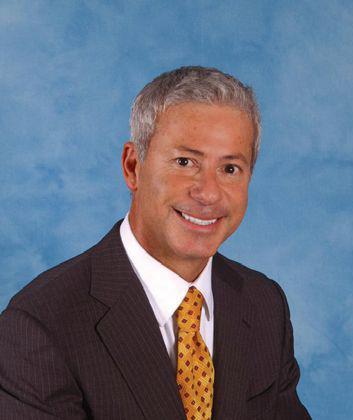 Hub International Northeast
Hub International Northeast
frank.delucia@
hubinternational.com
(212)338-2395
Understand employees, and what they want and need from benefts. Employers can start helping their recruiting and retention by rethinking the employee value proposition, which refects the organization’s rewards, values and ways the company recognizes employees. Key to reevaluating the employee value proposition is the fact that employees have a different vision of work and rewards than in the past. Persona analyses geared specifcally to the real estate industry provide insight into employees, helping customize benefts.
One way that employers will need to compete is a new way of looking at benefts: instead of one-size-fts-all, organizations will need to personalize benefts while taking an active role in in helping deliver them.
Offer value. Because limited medical plans are voluntary, employees won’t bite if there’s no value in the plan. A limited medical plan needs to offer access, cover preventative
services and address gaps in care.
Emphasize employee communications. A third-party vendor can handle administrative tasks, but not necessarily employee communications. Employers must make sure their vendor offers strong communication and education capabilities.
Remember that retirement plans are important to retention and fnancial wellness. Benefts like the 401(k) drive recruitment and employee retention because they uniquely incentivize long-term employment, especially when offered with an employer match. When employees know that their company is interested in securing their fnancial futures, they’re more likely to stick around and put in their best work.
Focus on a quality employee experience (QEX). Strong fnancial wellness programs from employers can help workers’ emotional and fnancial health, leading to greater happiness and productivity. A QEX approach entails fashioning the experience employees will have with compensation and benefts. Workers who have quality experiences are more likely to be loyal and create an organization that is attractive to potential employees. Money and fnancial security is at the center of QEX.
Employees often need help for things beyond a wage and health benefts. That’s where money and security, fnancial wellness and QEX intersect.

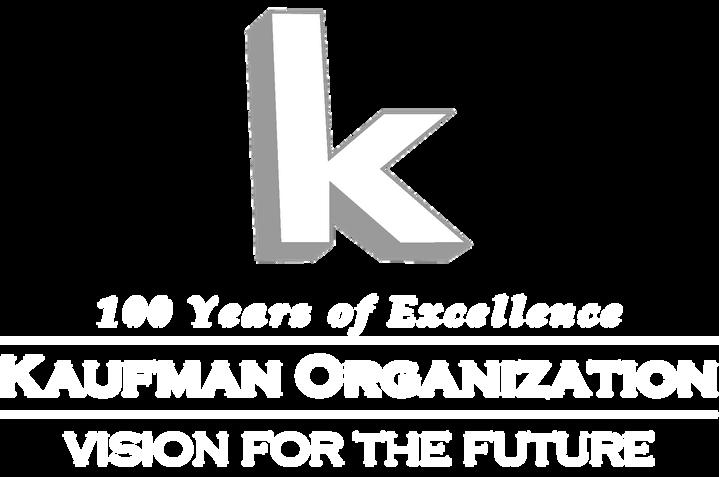

WORTH OF EXPERIENCE.
We would like to take this opportunity to thank the following people:
Our team & staff for their endless dedication and support
Our tenants for their cooperation to keep our buildings safe
Our partners for their trust and confidence in these challenging times All New Yorkers working tirelessly to keep our city moving
We hope everyone continues to be healthy and safe in 2021.
1605 King Street
Alexandria, VA 22314
turfmutt.com
(703)549-7600
It’s no surprise to anyone in the real estate industry that the family yard is one of the most important aspects of a home. According to a poll commissioned by the TurfMutt Foundation and conducted online by The Harris Poll, nearly three-quarters of Americans overall (72%) say a spacious yard would be at the top of their wish list if they were looking for a new home. They realize spending time in green space — including that in our own backyards — is good for our well-being, including reducing anxiety and depression, improving mood and enhancing memory. It's also good for the planet. The living landscapes in the family yard reduce the heat island effect, produce oxygen, capture carbon and support pollinators and neighborhood wildlife.
Outdoor power equipment has helped create these dream yards, and manufacturers have continued to innovate and improve products in response to growing consumer needs. Today, consumers have more choices in their outdoor power equipment than ever before, from smart technologies to various power sources. Homeowners can choose the best equipment powered by an array of sources to ft their abilities and the jobs at hand.
Some recent innovations include:
• Robotic mowers that act like a Roomba. These quiet machines cut a fresh lawn year-round and can venture up a hill without a thought.
• Smart irrigation systems that monitor plant moisture levels and conserve water.
• Smart generators that check-in via app.
• Some UTVs that can operate hands-free.
• Battery-powered chainsaws that are lightweight, powerful and portable.
Now can be a great time to invest in new outdoor equipment. Keep these tips in mind:
• Determine your needs. Note where maintenance may be required in your yard. Will bushes need to be trimmed back? Do you want to put in some fowering bushes or a tree? Are you adding features like a fence or more grass?

• Consider the equipment needed. Get out your equipment and see what is needed or could be upgraded. Repair anything that needs attention or identify where a newer or better machine is required.
• Plan storage and maintenance. Equipment should be stored in a cool, dry place. It also should typically be serviced twice a year — at the end of the fall and the beginning of the spring. Put service dates on your calendar with a reminder. It’s also a good idea to fnd or download the owner’s manual to have on hand.
• Think about adding a generator. Yearround severe weather and an increasingly unstable power grid mean consumers are turning to generators for power more frequently. When electricity goes out, generators keep your home humming with light and power. Today’s generators offer a variety of features, and there is a product for every need. While shopping for your generator, don’t forget outdoorrated extension cords and fuel cans.
To learn more, go to turfmutt.com.
Langsam Property Services Corp. is a Bronx-based real estate management company. These buildings are located in the Bronx, Manhattan, Queens, Brooklyn, and lower Westchester County.


Langsam is designated as an Accredited Management Organization (AMO), a standard of excellence in management conferred by the Institute of Real Estate Management (IREM).
1601 Bronxdale Avenue
Bronx, New York 10462


Tel: 718. 518. 8000
Fax: 718.518. 8585
Sometimes counterprogramming works in unexpected ways. Ask the producers of “Barbie” and “Oppenheimer,” and the stores and restaurants that benefted from an unlikely double feature. The viral “Barbenheimer” trend — where people saw the two movies on opening weekend, sometimes back-to-back — created a unique event that also brought people to the theaters and the centers that housed them.

Debra
Hazel CommunicationsNorth Las Vegas, NV
(201)618-5247
I’m sure that the folks who scheduled the two flms thought they would be perfect counterpoints — a female-oriented “toy movie” would split the audience with the serious, awardsbait flm about the scientists who created the atomic age. The two non-sequels would have a nice opening weekend before the August doldrums and the audience would all go on to the next thing before back-to-school.
That’s not what happened. Whether by design or not, the audience who thought they’d get a kick out of pulling a Barbenheimer — or just didn’t want to not do Barbenheimer — found flms that were about something, were gorgeously flmed, boasted brilliant dialogue and really needed to be experienced at least twice. The cinematic result: more than $1.8 billion in gross for the two as of mid-August.
This was great for the theaters, which were still lagging pre-pandemic attendance and even were having a slow-ish summer. But on Barbenheimer weekend, there was only one working soda machine on Sunday afternoon at my AMC and it was barely keeping up with popcorn, so great was the demand.
The phenomenon was also great for retail. Bank of America cardholders’ non-gasoline spending rose 1.9% year over year the week ending July 22, said a bank report, which also noted that entertainment spending overall rose 13.2% year-over-year that weekend. (The previous week had seen a 4.5% increase over the previous year.) Clothing sales were up, too — how could we not wear something new (and probably pink) to see our favorite fashionista/astronaut/president/doctor/paleontologist/nurse?
To be fair, shoppers were already returning to physical stores. Placer.ai reported that after four months of year-over-year declines, foot traffc in enclosed malls, open-air lifestyle centers and outlet centers rose in June, and median dwell times continued to stay up.
In addition, the heat likely was a factor. The National Centers for Environmental Information reported that the average temperature of the contiguous U.S. in June was 69.0°F, a half-degree above average. Three hours plus of someone else paying for air conditioning (and that’s just for “Oppenheimer”) certainly sounds appealing.
But what this summer proved is that as infation has eased, people want to come back to the theaters and the stores, if you give them what they want — something new, something fun and that’s an event. And they will spend.
Just ask Taylor Swift, who reportedly has a two-hour line to buy her merchandise before her concerts.



Navigating U.S. tax law can feel like a Herculean task, particularly for small businesses and taxpayers in the real estate industry. The Tax Cuts and Jobs Act in 2017 made this task even more complex due to Section 163(j) — a provision that restricts the amount of business interest taxpayers can deduct. Opportunities and exceptions do present themselves, but navigating these waters demands strategic planning, particularly as the rules changed after December 31, 2021.
Sean Burke Tax Partner, Real Estate Group Marcum LLP Boston, MAsean.burke@marcumllp.com

Under the provisions of Section 163(j), the deduction for business interest expense is generally limited to the sum of:
1. Business interest income
2. 30% of the taxpayer’s adjusted taxable income (ATI) and
3. Floor plan fnancing interest.
Two exceptions to Section 163(j) specifc for the real estate industry’s taxpayers enable them to avoid the business interest limitation:
1. The taxpayer qualifes as a small business under Code Section 448(c).
2. A taxpayer meets the requirements as a Real Property Trade or Business under Code Section 469(c)(7)(C) and elects out of Section 163(j) as described in Code Section 163(j)(7)(B).
For tax years beginning before January 1, 2022, the computation of ATI was:
1. Tentative taxable income
2. Subtract interest income
3. Add back interest expense
4. Add back depreciation and amortization.
For tax years beginning after December 31, 2021, taxpayers can no longer add back depreciation and amortization in determining ATI. This change has resulted in many more taxpayers being impacted by Section 163(j).
Taxpayers who would typically meet the defnition of a small business but are considered a tax shelter or a syndicate can not use the small business exemption. In some cases, real estate entities could fip from net income to net losses due to items like depreciation or vacancy. In such cases, strategies such as electing out of bonus depreciation or utilizing specifc tax regulations may alleviate the application of Section 163(j). This could include using elections based on the prior year’s income or fling Form 8990 for temporary relief.
If the taxpayer does not qualify as a small business for the current tax year but expects to qualify in a succeeding tax year, the second option would be to fle Form 8990 and limit the interest for the year. The interest that was limited would be treated as paid or accrued in the succeeding tax year. If all else fails, a taxpayer that qualifes as a real property trade or business can election out of Section 163(j) by making the election out under Code Section 163(j)(7)(B).


In a competitive industry such as real estate, asset managers often are plagued by the liquidity problem. When a seller wants to dispose of a property quickly, asset managers often must sell for a signifcantly lower price than anticipated because of outdated data.
How do we lower liquidity risk? With a high-quality data fow. Without a credible data source, asset managers lack the transparency needed to make informed decisions quickly. Artifcial intelligence (AI) can leverage clean data fows to tackle this challenge.
Robin Rivaton CEO Stonal Paris, France
Liquidity is slower within real estate than in other asset classes. This is partly due to its layered complexities, with the illiquidity of the asset, transaction costs, location, legal or regulatory factors and market sentiment all coming into play, as well as the addition of multiple stakeholders.
McKinsey data shows that employees spend approximately 19% of their week just searching for the right insights to manage the process. Manual data practices halt the fow of sales. In turn, asset managers struggle to accurately evaluate property values and make well-informed decisions, so returns are diffcult to calculate and verify.
At Stonal, we have proprietary algorithms powered by the latest technology to automatically comb through documents and categorize the data pulled from them. Removing unclean data and anomalies ensures asset managers
can make quick and accurate decisions.
The absence of an automated data platform introduces hurdles for asset managers to access accurate and real-time information on properties and market trends. By using a unifed platform that consolidates diverse data sources, asset managers will gain a comprehensive view of their portfolios.
Advanced and unique AI algorithms take this a step further by automating the process. Stonal has found that providing users with a centralized data lake of information, alongside advanced AI can speed up the liquidity process by about eight weeks. When data is consolidated, unforeseen events and potential risks can be mitigated from the start.
AI automatically detects inaccuracies and irrelevant information, meaning data quality is maximized. This provides asset managers with the capability to make well-informed decisions. AI-powered tools can thoroughly and rapidly analyze market trends and forecast demand, accelerating the liquidity process and ensuring proftability. Introducing automation to drive effciency and accuracy through a central database allows managers to monitor the performance of independent properties within the portfolio.
Real estate is still fguring out how to best integrate AI. We must ensure that we adopt technologies that address the problems asset managers face. Why not start with liquidity?





They’re as iconic as New York bagels and as ubiquitous as tourists in Times Square: the wooden water towers that dot the roofs of the city. Between 12,000 and 17,000 of these colossi provide the pressure needed to get safe drinking water above the sixth foor of buildings. Their history goes back to the 1880s with the introduction of indoor plumbing, and little has changed in the basic structure.
Matthew
Adam Properties Inc.375 Pearl Street – 14th Floor
New York, NY 10038
(212)699-8900
imeister@matthewadam.com
To maintain quality drinking water, the city required annual maintenance and cleaning of tanks by a licensed plumber, but with no reporting mechanism, many buildings failed to comply. This was necessary because birds or rodents could enter the water towers or sediment or unhealthy bacteria could accumulate.
In February 2009, the City Council voted to require annual inspections, with the results kept on fle for fve years and available to residents.This law relied on an honor system and proved ineffective. In 2015, reporting annual inspections to the Department of Health was mandated. The report must list whether the inspection requirements were met and list all non-compliances. Unsanitary conditions needed immediate correction.
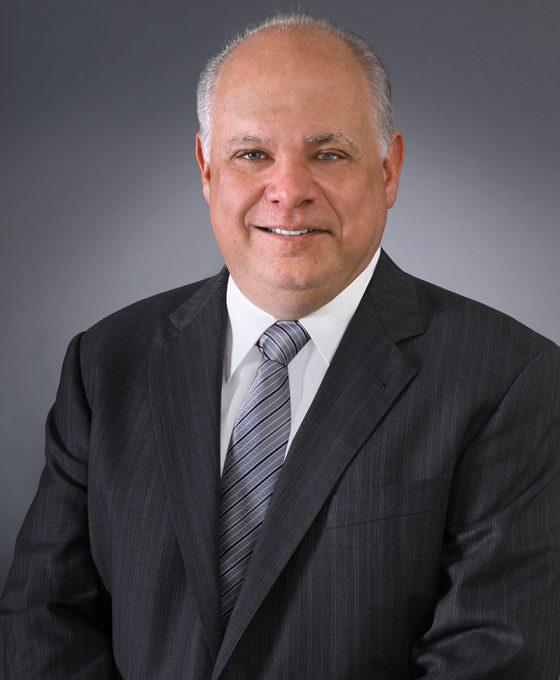
“Compliance with the inspection requirements has been strong,” said Andrew Rosenwach of Rosenwach Group, a water technology frm.
Regular cleaning of tanks is necessary to prevent water contamination.This usually takes about six hours depending on its size. This process includes scraping away the sediment and any debris that has accumulated, then
cleaning the interior surfaces with a chlorine solution. Routine inspection for holes and cracks is necessary to prevent the intrusion of contaminants. Holes are caulked with epoxy and the metal hoops used to secure the walls of the tank are tightened to spec.
Why water towers? The city receives gravity-fed water from upstate reservoirs, but it lacks the pressure to rise above the sixth foor. Thus, towers must pump the water to storage tanks on the roof or interior upper foors.
The planks are made offsite and brought up through the staircase to the roof where the tank is built without sealants or nails. The planks are held together by a steel band. The planks bond providing a leak-proof container that can last up to 35 years.
Taller buildings may have more than one tank to accommodate greater water usage. Some modern buildings place the tanks, usually made of steel or other compounds, within the interior of the buildings for aesthetic reasons and some properties decorate the wooden towers to bring attention to the property.
Wood is used outdoors as opposed to concrete or steel which is signifcantly more costly, can rust and could freeze. The wood insulates the water to prevent freezing in winter or overheating in summer. Pump pipes can freeze if insuffciently insulated.
Years ago it took as long as four weeks to replace a water tower. Today, a new tower can be installed in 10 hours.

The long-awaited Paradox Museum has fnally been completed and is ready for visitors at American Dream Mall in East Rutherford, New Jersey. Built out by JRM Construction, the museum features over 70 interactive exhibits for guests to immerse themselves in and enjoy in just over 11,000 square feet.
From a creative standpoint, the project
incorporates an innovative design that appeals to the senses. For example, the museum was built to have a one-way fow so that visitors can experience each paradox exhibit to the fullest. JRM was responsible for building out new exhibit rooms, a welcome area, reception, restrooms and a retail store.
The Paradox Museum welcomes guests

with a unique storefront using custom metal and glass cubes, giving the new museum a modern twist. Additionally, each exhibit area was assigned a unique color and design scheme.
Along with all of the high-end fnishes that were added to the project, JRM also installed new MEP and sprinkler systems, which are key to supporting the

Exhibits encourage guests to think critically about what they see museum's infrastructure.



Others involved with the project include Mancini Duffy, architect; Ryan Soames Engineering, engineer and Eipel Group Engineering, structural.
JRM is no stranger to the New Jersey colossus, having completed a number of other build-outs at American Dream, including stores for Louis Vuitton, Eddie Bauer, Anne Fontaine, Ferrari and Mulberry.
Guests become part of the exhibit

CRED iQ, a provider of commercial real estate (CRE) data, analytics and valuation tools has named Harry Blanchard as managing director and head of data and analytics.
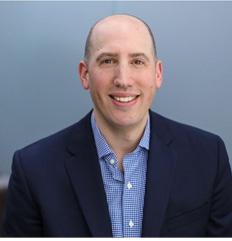
Blanchard’s experience covers buy-side, sell-side, regulatory, compliance and banking with leadership roles at Moody’s, MetLife and Wells Fargo.
“We are thrilled to welcome Harry to the CRED iQ leadership team,” said Mike Haas, CRED iQ co-founder and CEO. “Harry’s multifaceted experience and leadership skills are vital to our future, and I am pumped to watch him help shape our business.”
Blanchard will operate out of CRED iQ's New York City o ces, set to open in the fall, joining a growing leadership team based in Manhattan.

Henderson Companies announced the appointment of 22-year industry veteran Andrew Bennett as business sector executive for Henderson Engineers and Henderson Building Solutions. In his new role, Bennett will oversee operations for five practices: core and shell, mission-critical, mixed-use, warehouse and workplace.
Bennett has served in several leadership roles since joining Henderson in 2014. As health sector outpatient practice director, he most recently oversaw ground-up and renovation projects for healthcare providers nationwide. He additionally has served on the Henderson Companies board of directors since 2021 and has held the role of director of operations for the company’s New York o ce for nine years. Both his board and o ce leadership positions remain unchanged.
“Andrew is a multifaceted leader with a knack for juggling a variety of major responsibilities with finesse and delivering results. His promotion to sector leadership couldn’t be more well deserved,” said Kevin Lewis, CEO of Henderson Engineers and president of Henderson Companies. “To know Andrew is to know a professional who sincerely cares for the people he works with and inspires them to strive for excellence.”
A licensed professional engineer and certified commissioning agent, Bennett earned his mechanical engineering degree from Lafayette College in Easton, Pennsylvania.
Levin Management Corp. (LMC) has appointed Rose Meno as controller.

With more than 15 years of experience, Meno has expertise in all facets of real estate and property management accounting and finance. At LMC, she is working alongside Vice President/Chief Financial O cer Jennifer Mercer, responsible for financial reporting, cash flow management and overseeing vendor payments and tenant receivables, among other duties.
“Rose is an excellent addition to our growing accounting department, and we are pleased to welcome her to Levin Management,” said Mercer. “Her team-centered mindset, motivational leadership, and wealth of practical experience in both real estate and finance are tremendous assets for our day-to-day operations, particularly during this time of significant company and portfolio expansion.”
Prior to joining LMC, she was a portfolio controller for a property management firm. She earned a bachelor’s degree in business administration, with a concentration in public accounting, from Pace University.
As part of its aggressive growth plan to increase market share in large-scale projects and expand into new sectors, Shawmut Design and Construction has hired Julio Cruz as a project executive in South Florida.

Cruz will leverage his 25 years of experience to lead large, groundup projects and develop teams of experts to increase Shawmut’s market share of projects with substantial scope and complexity. The firm is focused on driving its share in commercial, education, retail, healthcare and hospitality markets.
“Julio’s roots in South Florida construction coupled with his commitment to exceptional client service made him the ideal addition to our team,” said Alexis Leal, head of Florida, Shawmut. “His technical expertise in projects ranging from ground-up high-rises to complex renovations helps round out our talent bench as we look to the future.”
Cruz previously served as a project executive for several large construction management firms in South Florida. Cruz is a Florida-certified general contractor, LEED AP, ASHE-certified and holds a bachelor’s in architectural design and a master’s in building construction from the University of Florida.
Solution can be found online at: bit.ly/MRSeptember2023Crossword

1. Company launching a new broker platform with Tavant, 2 words

5 Screening platform for buyers and lenders
11 Thanksgiving side dish
12 New Life Sciences biome, manufacturing/warehouse and office campus in Rockland County NY, 2 words
13 Iconic architect who designed more than 1,000 structures over a creative period of 70 years
16 Put money on
17 Sunrise time, abbr.
19 Pawns and knights, e.g.
20 England, Scotland, Wales and Northern Ireland
21 Buddy, for short
22 Tesla type of vehicle, abbr.
23 The W in CAW
25 Feline response
27 Homes in trees
28 Shakespeare's prince
31 Provider of real estate and investment management services, now using GPT and AI on its platforms
32 Fish in a can
33 Strength training boutique fitness brand returning to NYC UES, 2 words
36 "Kill Bill" star first name
38 Real estate representative
39 Director of luxury sales for Douglas Elliman, ____ Heatzig
2 Real estate brokerage partnering with Zillow connecting home buyers with builders on both platforms
3 Med. care provider, abbr.
4 Change locations
6 Watched closely
7 Dada artist Man ____
8 Buddhist sacred sound
9 Chinese dish made with egg noodles and stirfried vegetables, 2 words
10 Polished
14 Accelerate
15 Basketball rims
16 School transport
17 Airport board abbreviation
18 Recipient of the Jewish National Fund Tree of Life Award, Kushner CEO Laurent ____
21 Dubai skyscraper, ____ Khalifa
24 The big ___ (VIP)
26 Be ambitious
29 Lee who directed "Brokeback Mountain"
30 One of the Florida Keys
32 Duncan of the NBA
33 J.F.K. overseer
34 King who has appeared in many museums
35 Have title
37 Memo starting word
















Afounding member of Alexander Development Group (ADG), Mark Alexander has over 30 years of experience in building residential and mixed-use communities. He has developed 3,000 units of housing, 75,000 square feet of neighborhood retail and office space, and numerous gardens and public art installations with a cumulative value of $500 million. Prior to forming Alexander Development Group, Alexander was a founding member and president of Urban Builders Collaborative LLC (UBC), where he created a development pipeline of 550 apartments and 30,000 square feet of retail and community facility space. He received his undergraduate degree from New York University and is a graduate of the Notfor-Profit Executive Management Program at Columbia University.
How long have you been in the industry?
I've been in the real estate industry for over 45 years, beginning with my work in 1977 at Hope Community Inc., a community-based, non-profit affordable housing organization.
What brought you into the business?
From a young age, I had an interest in real estate and how neighborhoods are built. What motivated me to become a developer was witnessing the fires in the Bronx and Harlem in the 1970s and their devastating impact on the

surrounding communities. I grew up in East Harlem and witnessed the challenges faced by low-income communities and the broader trends of disinvestment in New York City. This, and the difficulties small property owners faced in financing improvements, formed the start of my career-long commitment to driving positive change in struggling communities.
After attending Grinnell College in Iowa, I transferred to NYU and pursued a degree in metropolitan studies. I studied the effects of redlining, which had become highly prevalent in East Harlem. At 21, I began my role as a property manager at Hope Community Inc.
Who inspires you?
George Calvert, founder of Hope Community. He served as a mentor to me and encouraged me in my research into redlining at NYU. One of my most memorable experiences with George was when we organized a conference to present my research on redlining to young leaders in the Bronx, Brooklyn and Harlem. This experience further opened my eyes to the amount of work needed to facilitate change in these areas and the power that our collective efforts could have on these communities.
What are challenges in urban mixed-use?
One of the biggest challenges we face in urban mixed-use development is the overbur-
densome regulatory environment; obtaining approvals for multifamily development has become increasingly difficult. In the city, real estate tax assessment policies highly disfavor multifamily rental housing by targeting 30% of gross rent revenue. This poses a significant challenge for developers and often results in seeking tax relief through programs like 421-A.
Distinguishing properties in highly competitive markets is a challenge for all developers. For our 42 Broad — a market-rate, multifamily high-rise in Mount Vernon, New York — we tackle this obstacle head-on. 42 Broad is the world’s largest market-rate multifamily highrise to achieve Phius passive house design certification. We have also worked diligently to meticulously curate more than 20,000 square feet of programmed amenities, including a state-of-the-art fitness facility and inviting communal spaces.
Does New York City present unique challenges and opportunities?
The complexity of the regulatory environment and the zoning code in New York City can pose significant challenges. This code, last rewritten in 1961, is frequently revised and added to, making it a time-consuming and expertise-driven process to plan and design a building here. It is crucial to modernize the zoning code for today’s urban landscape.
The financial backing of a global bank, and the streamlined structure and agility of a boutique bank that will keep your business moving forward.
BHI offers full commercial banking services that combine the personal attention of a prestigious boutique bank with the expertise and financial strength of Bank Hapoalim – the leading financial institution in Israel.
With a footprint in the largest U.S. metropolitan areas, we are committed to creating innovative funding solutions for your short– and long-term needs and providing convenient banking and liquidity products for your everyday business needs.


Perhaps no other sector of real estate has progressed to maturity as quickly as proptech, which appeared to be a novelty a decade ago, and now has become an accepted form of increasing effciency and reducing costs. Even if the market is slowing down, largely due to the rising cost of capital, investors, owners and managers are continuing to invest in proptech, as we can see by the numbers
39%
Residential sector’s share of overall proptech investment in 2022, down from 52% in 2021 (Houlihan Lokey, Proptech 2022 Year in Review)
$19.8 billion
The sum raised by venture capital-backed proptech companies in 2022, down 38% from 2021 (CRETI, 2022 Proptech Venture Capital Report)
$30.16 billion
The size of the global proptech market in 2022 (Precedence Research)
99
The number of proptech merger and acquisition deals in 2022, down from 162 the previous year (Statista)
9.3%
The anticipated compound annual growth rate for the proptech market from 2023 to 2033 (Future Market Insights)
65%
The percentage of property managers who said digital solutions signifcantly reduced costs (Gitnux Marketdata)

Kramer Levin has decades of experience representing NYC’s leading owners, investors and lenders in complex real estate and land use matters, including many of the city’s signature projects that shape our skyline. We understand market terms and conditions and the regulatory environment, and we know how to position you for success. Let us help make your next project a reality, whether you’re at the top of the New York real estate market or on your way up.
www.kramerlevin.com
Kramer Levin Naftalis & Frankel LLP 1177 Avenue of the Americas, New York, NY 10036 212.715.9100LAY THE GROUNDWORK FOR LONG -TERM SUCCESS IN TODAY’S RAPIDLY SHIFTING REAL ESTATE LANDSCAPE. Financial, tax, and accounting solutions for real estate owners, developers, managers, REITs, private equity funds, institutional investors, hotel owner-operators and other real estate-related entities.
